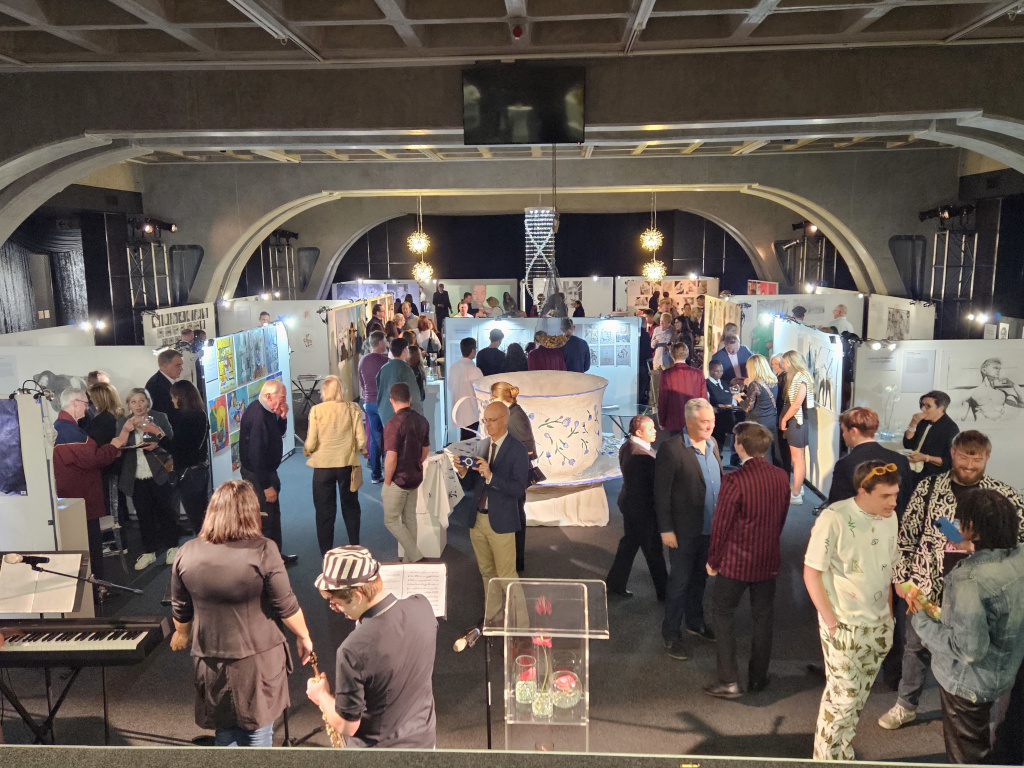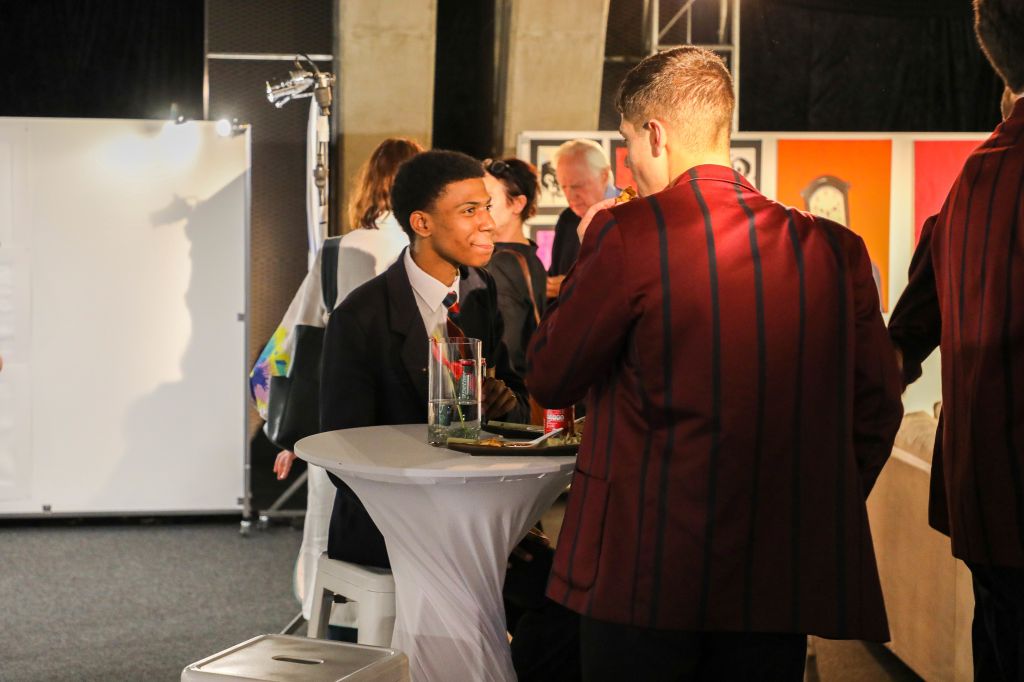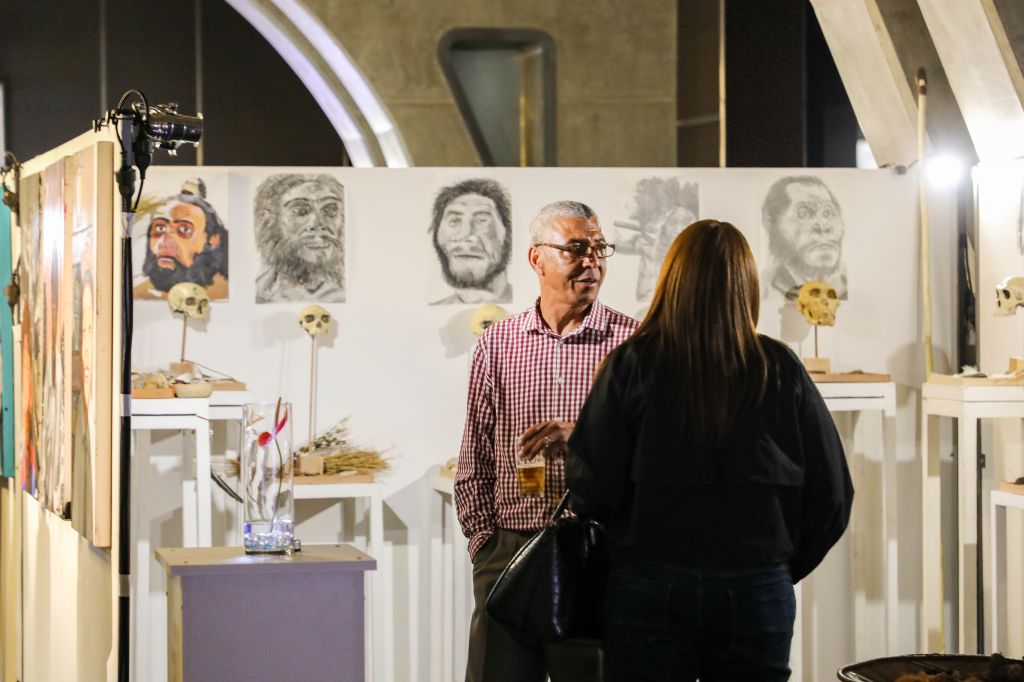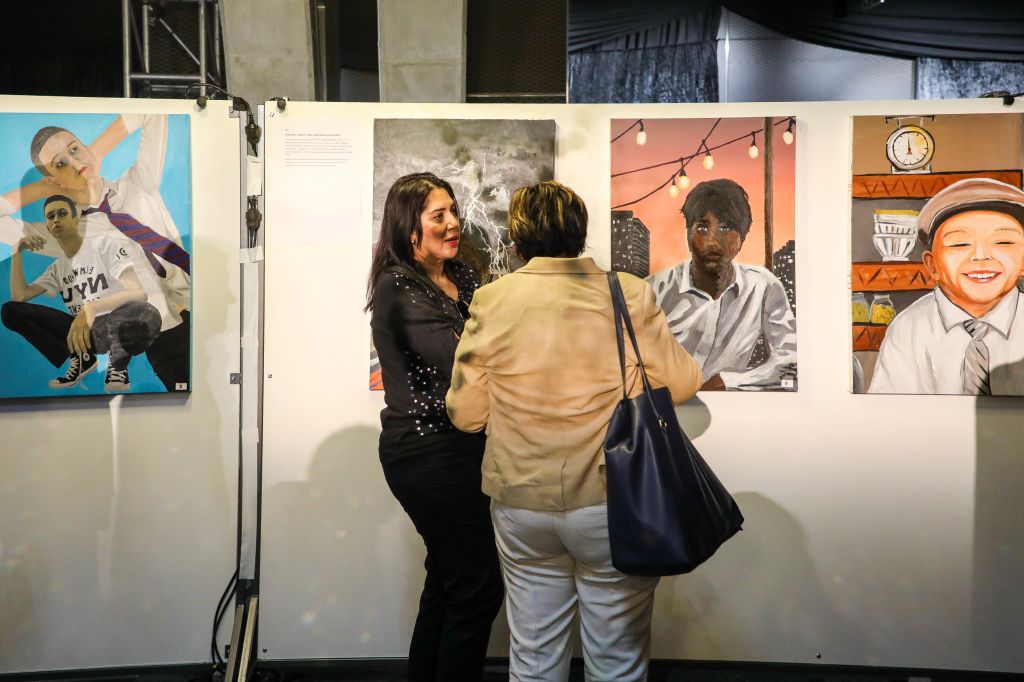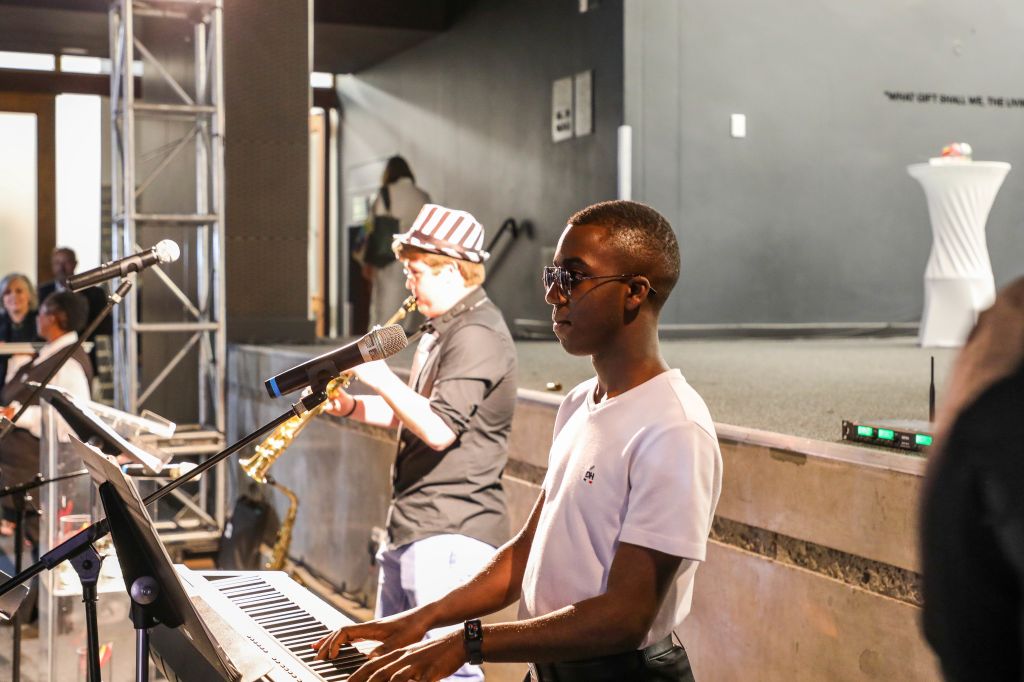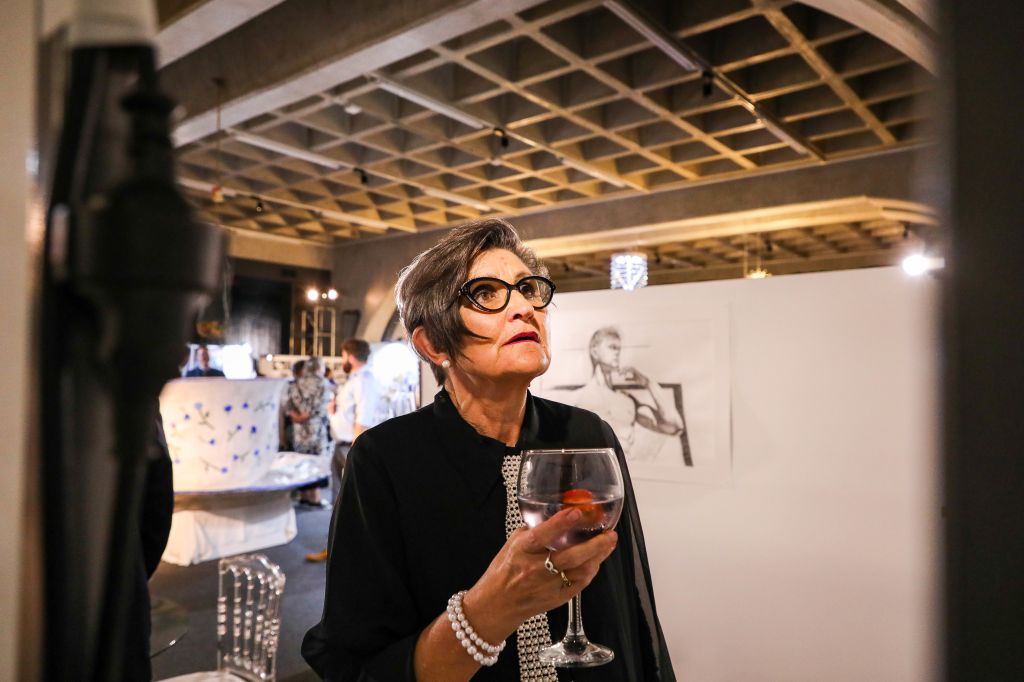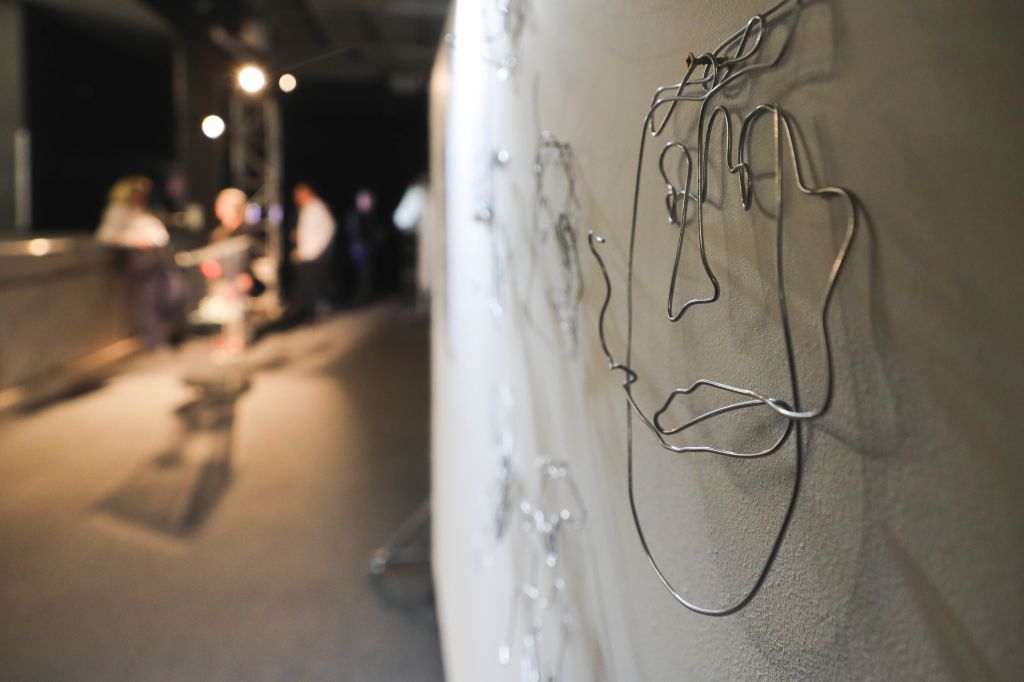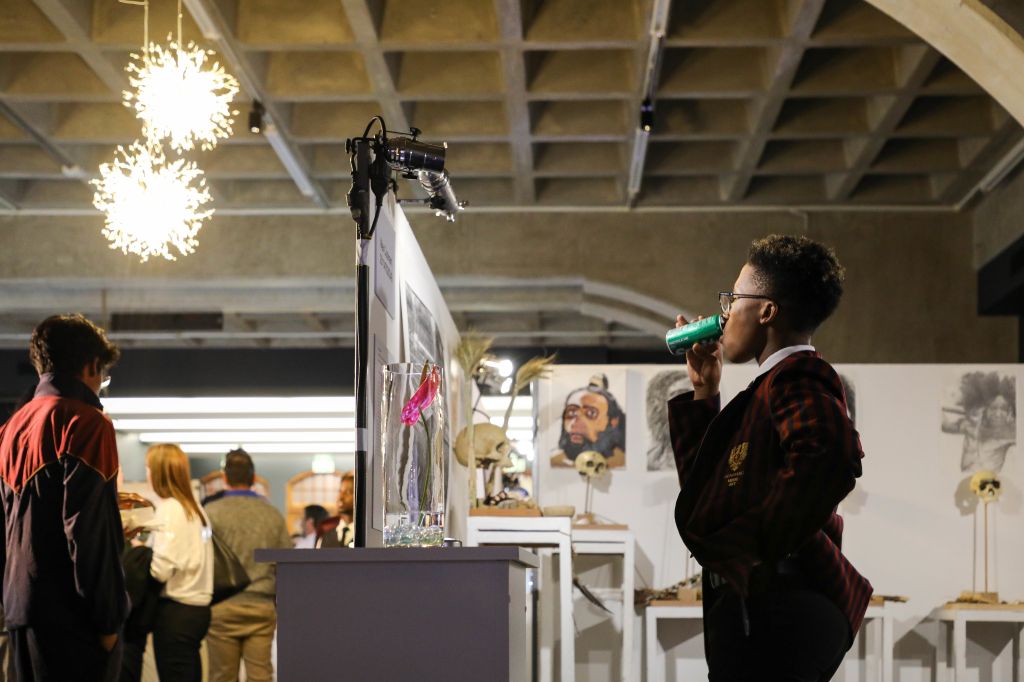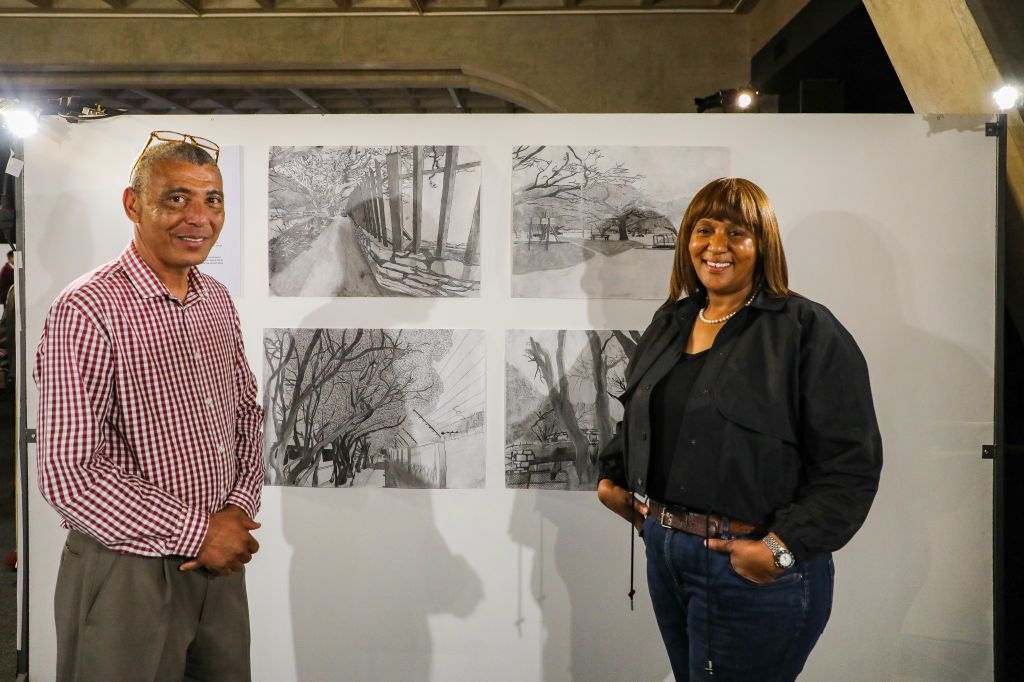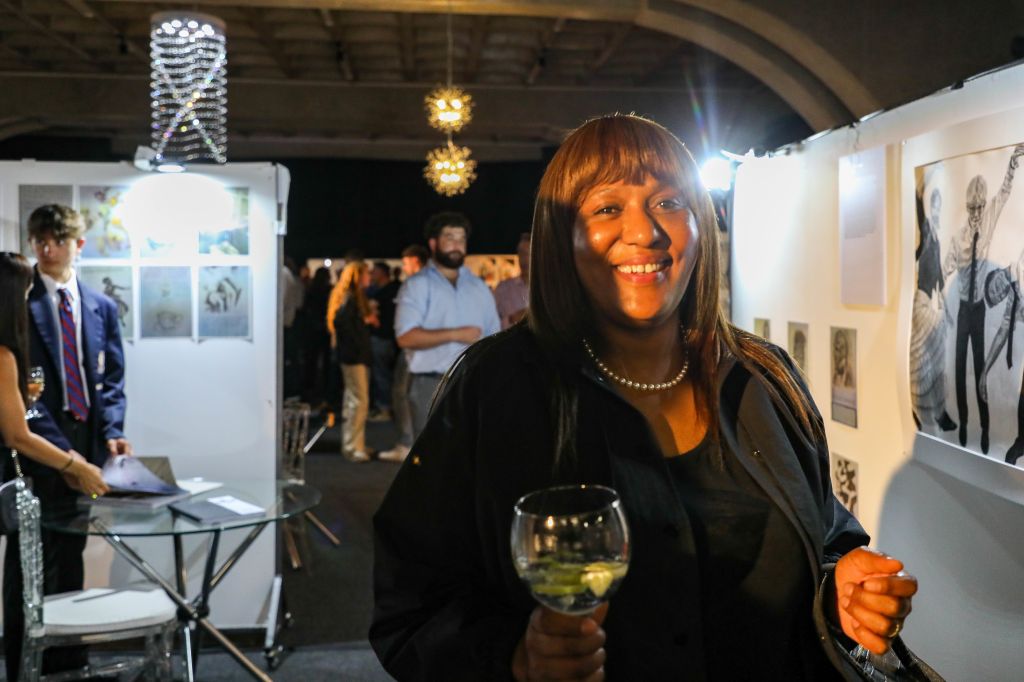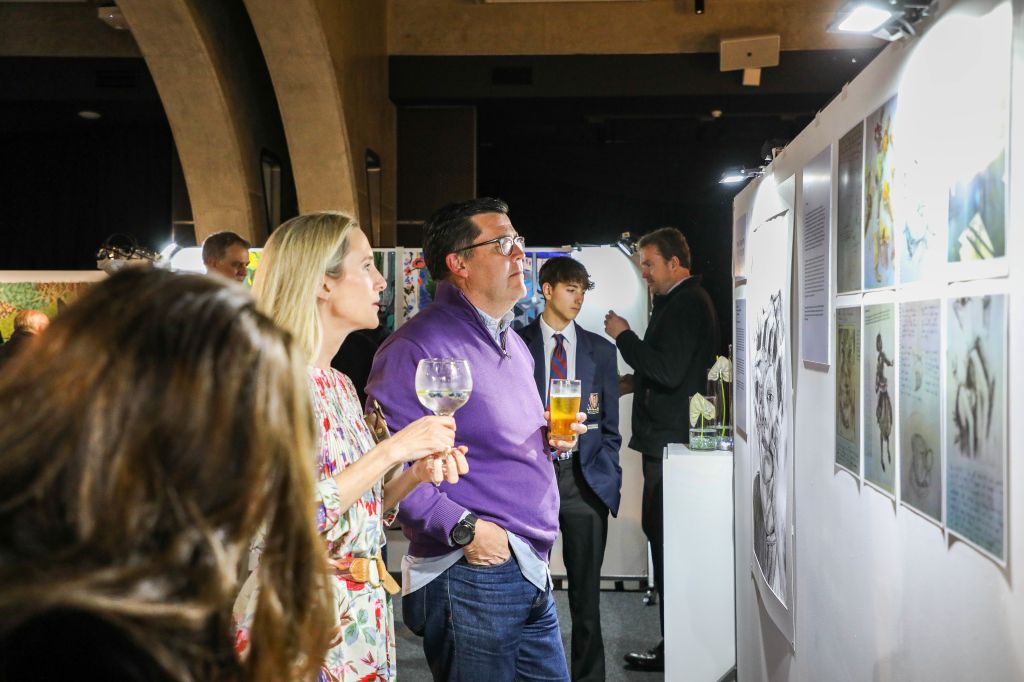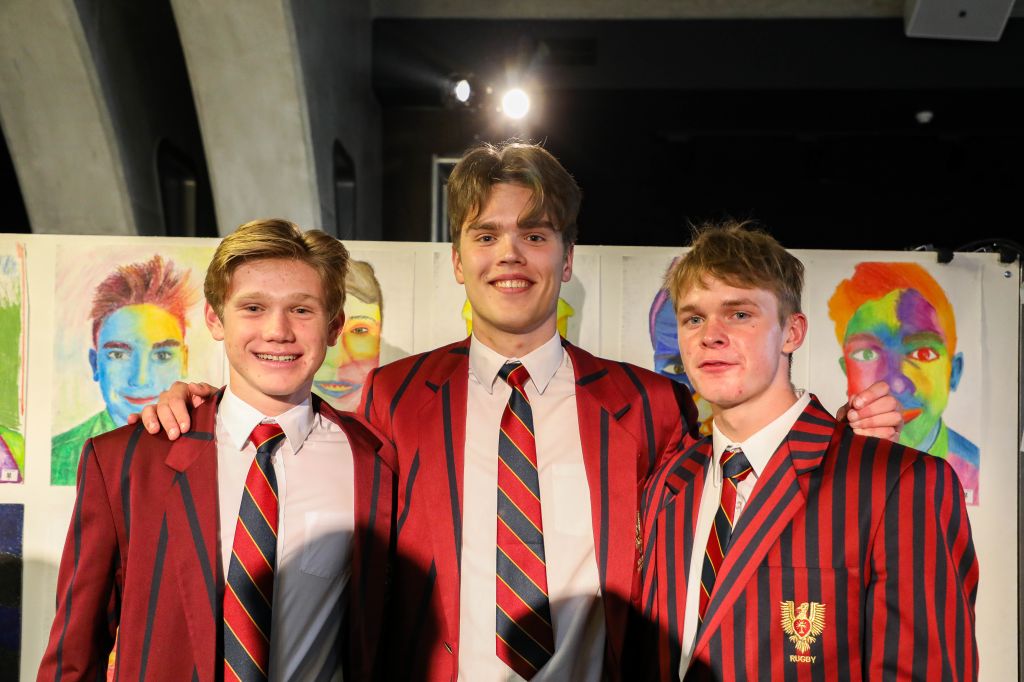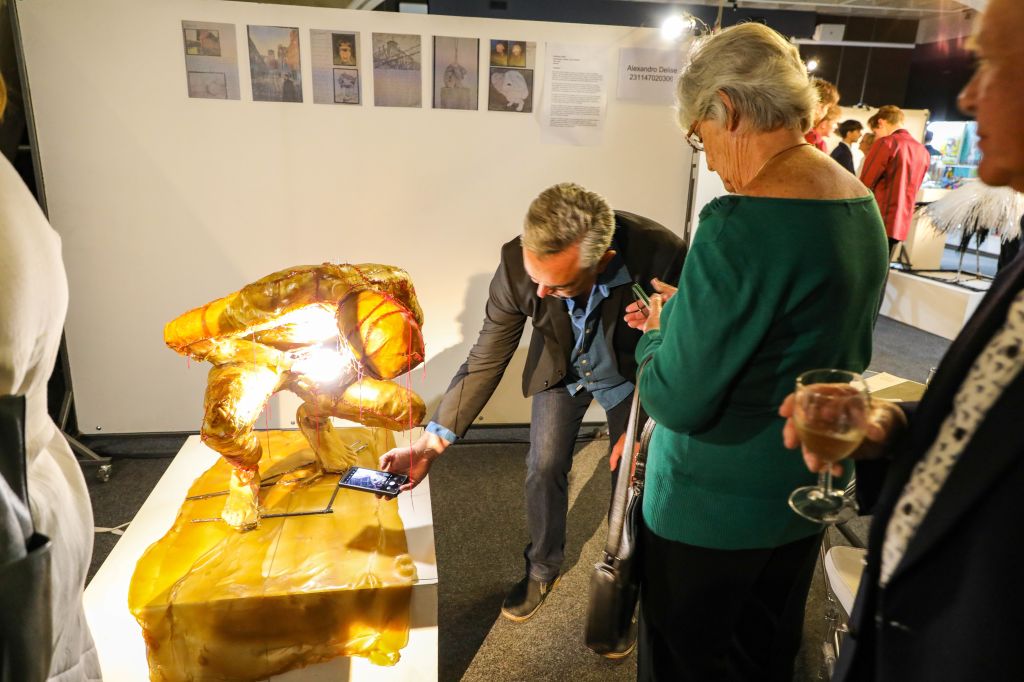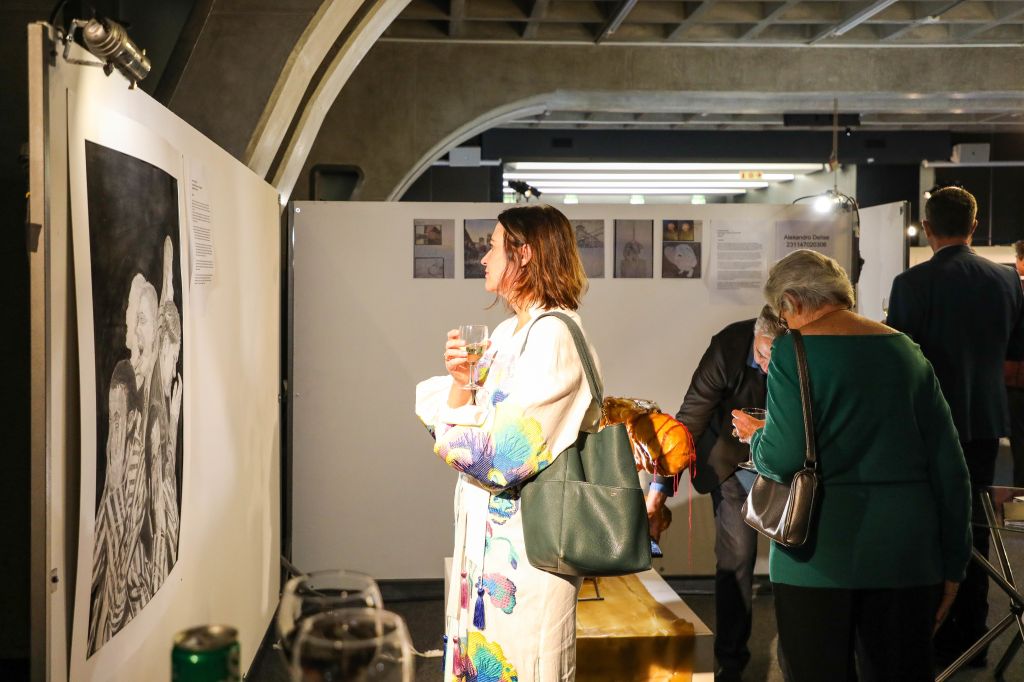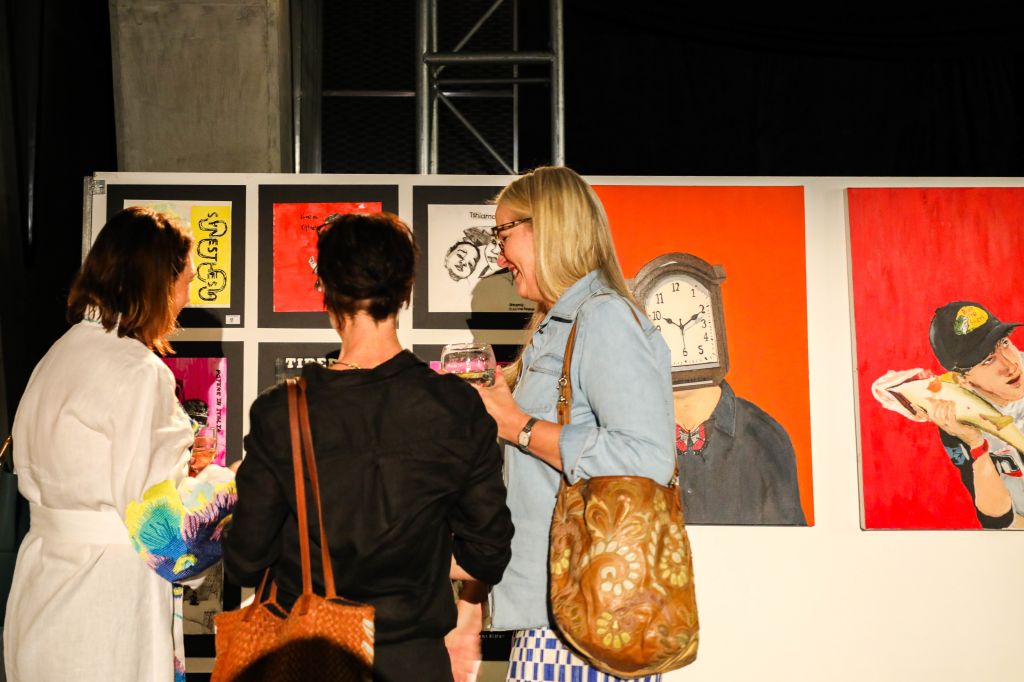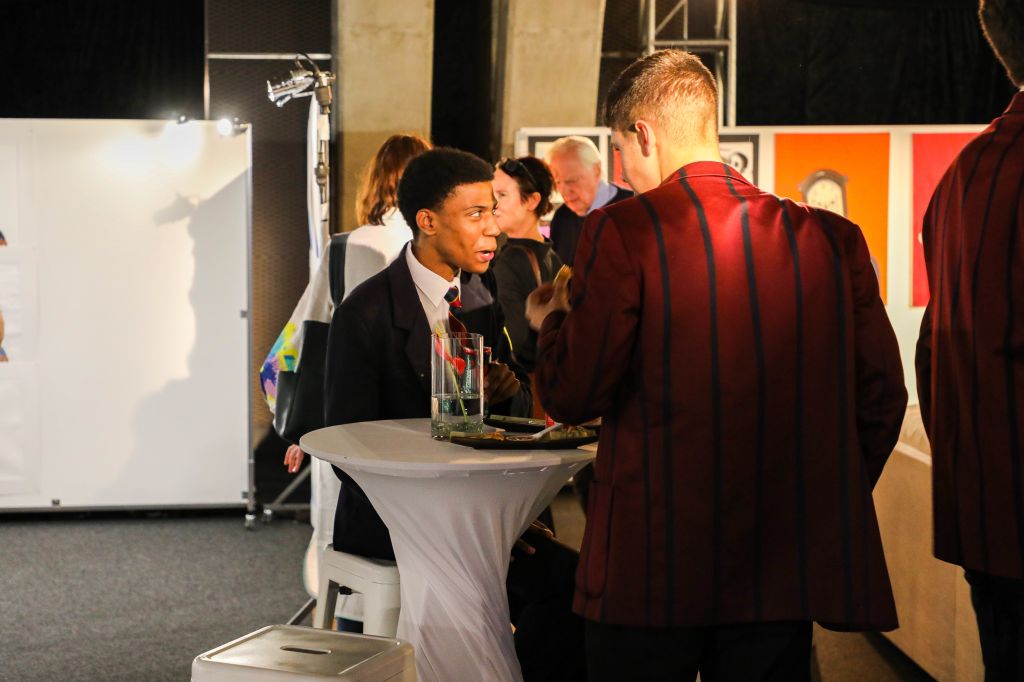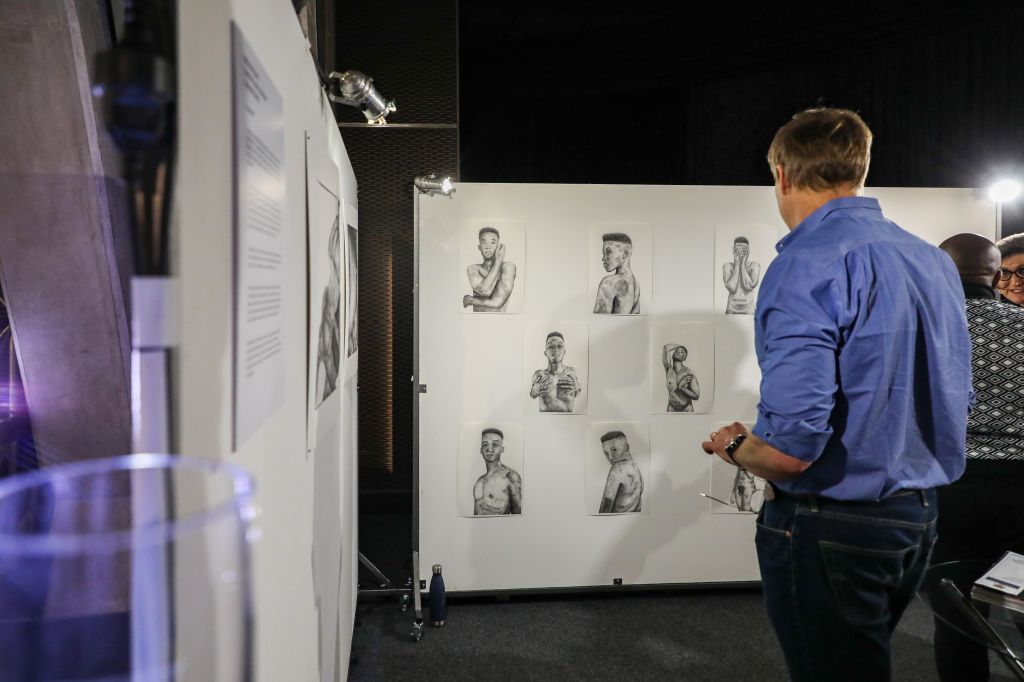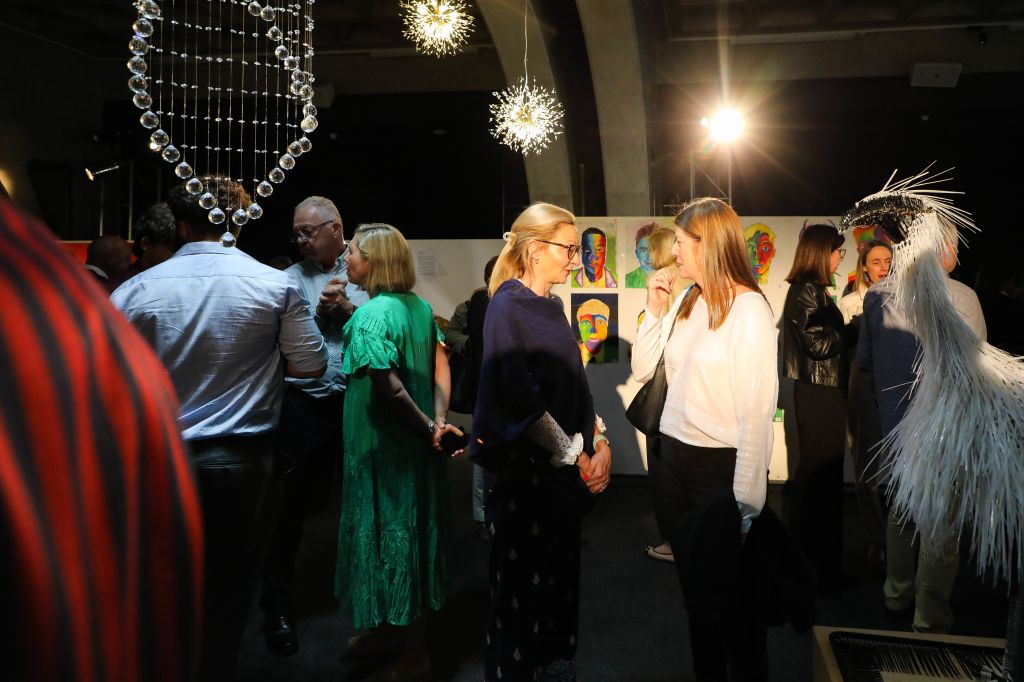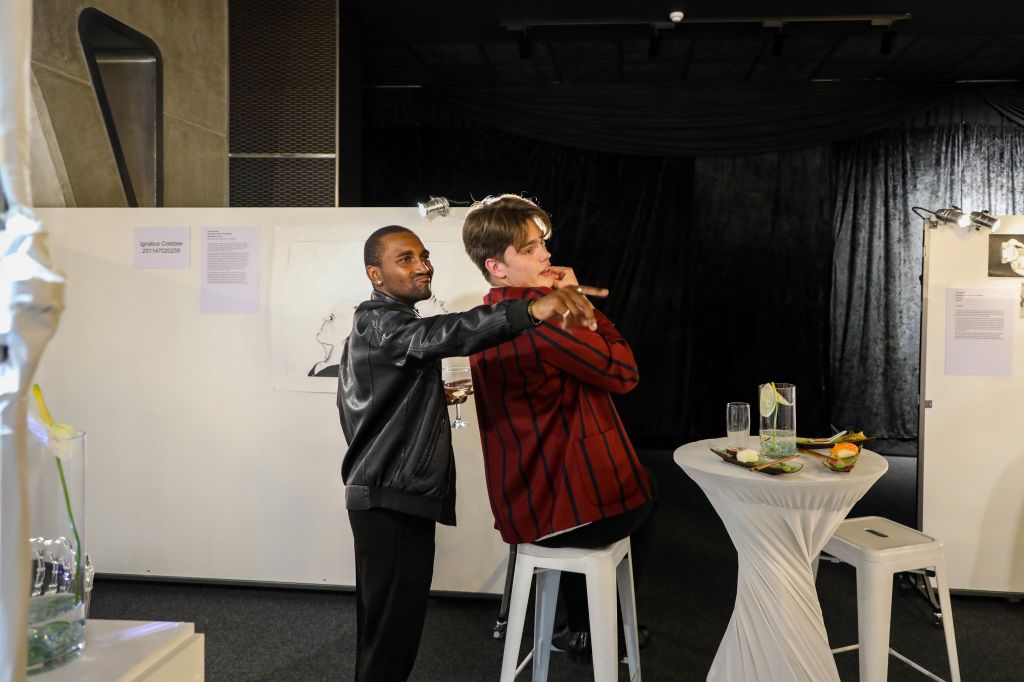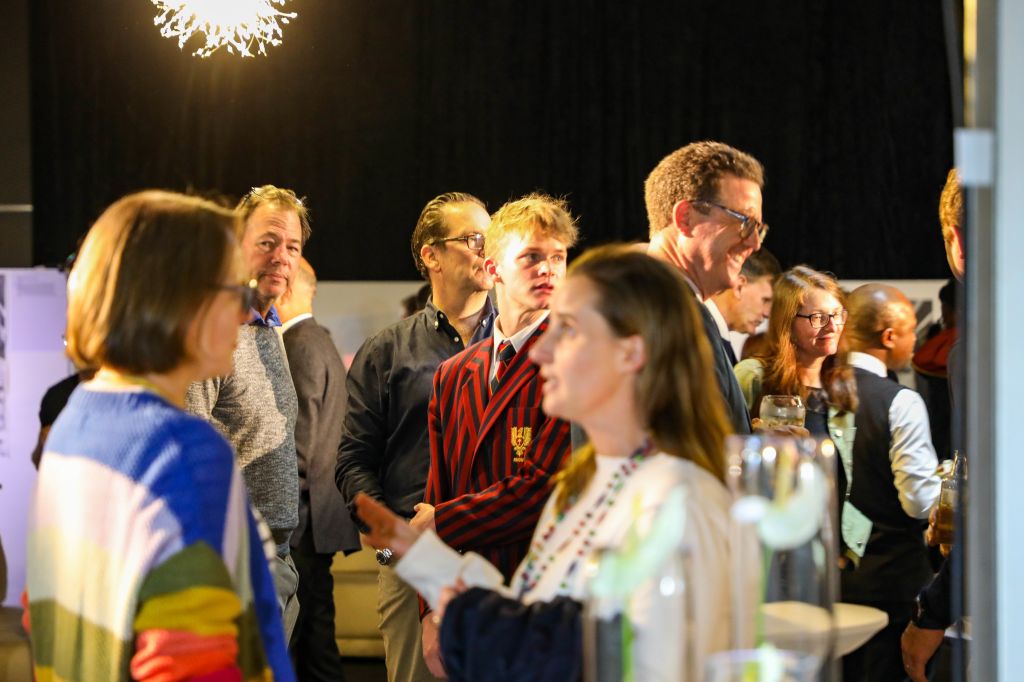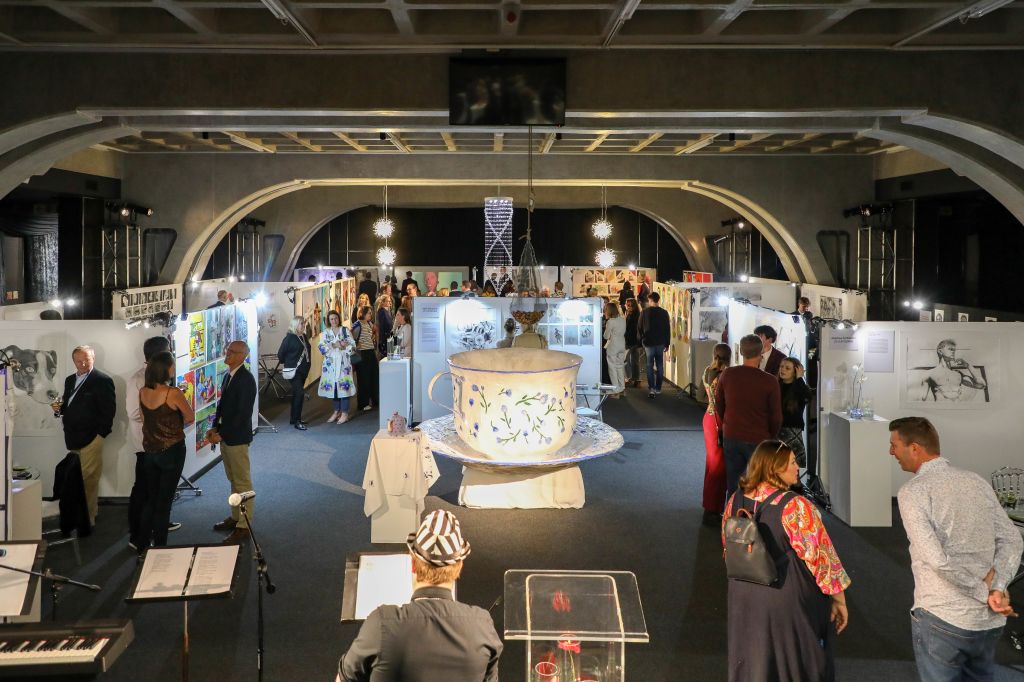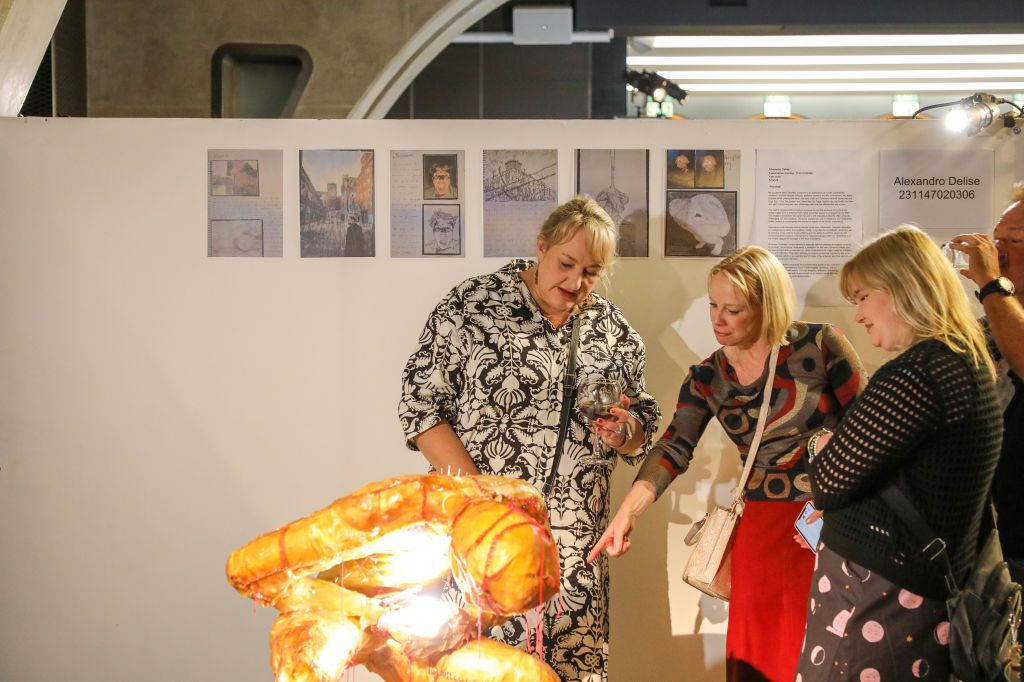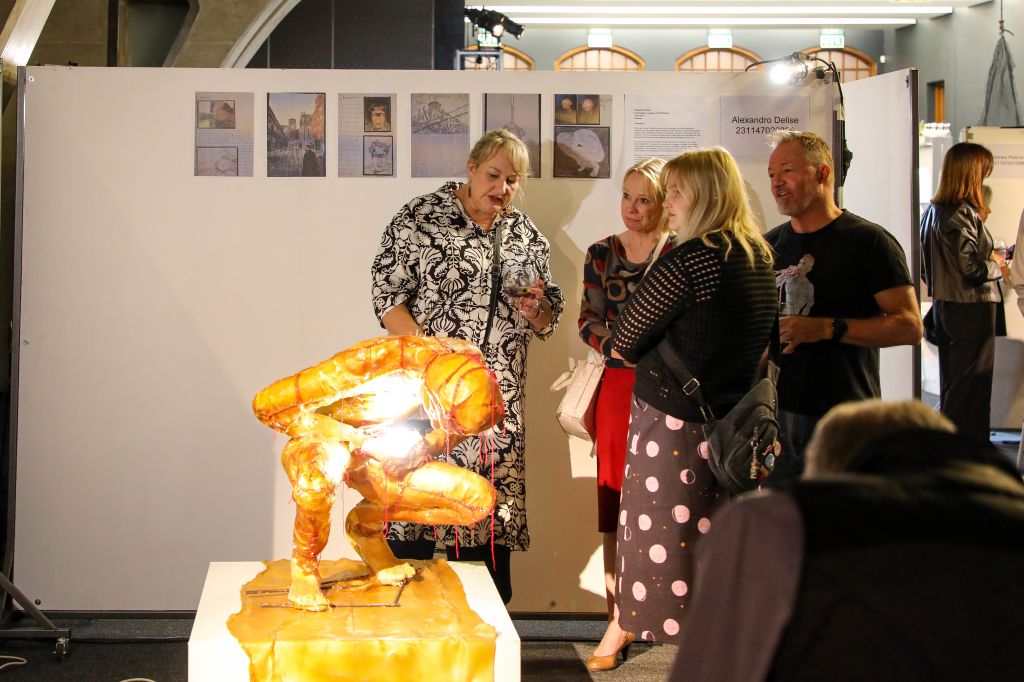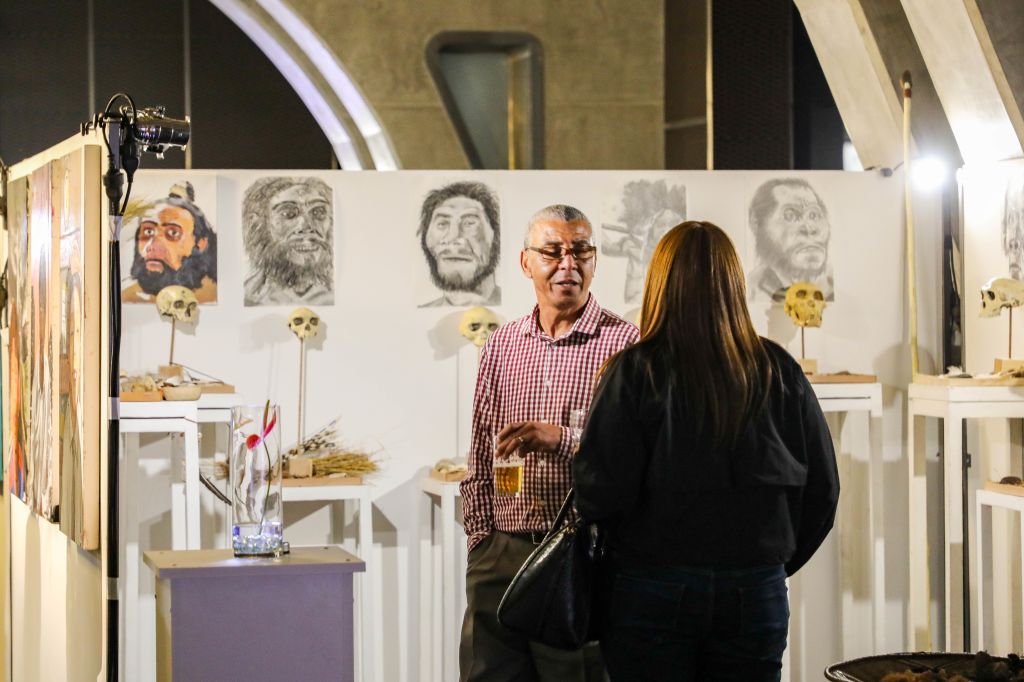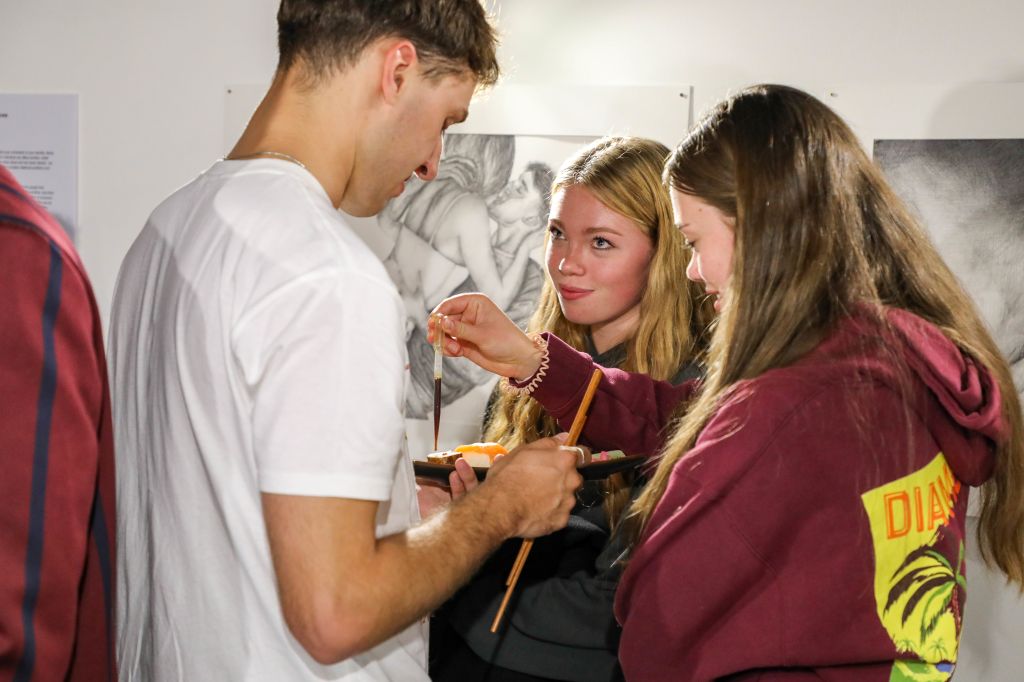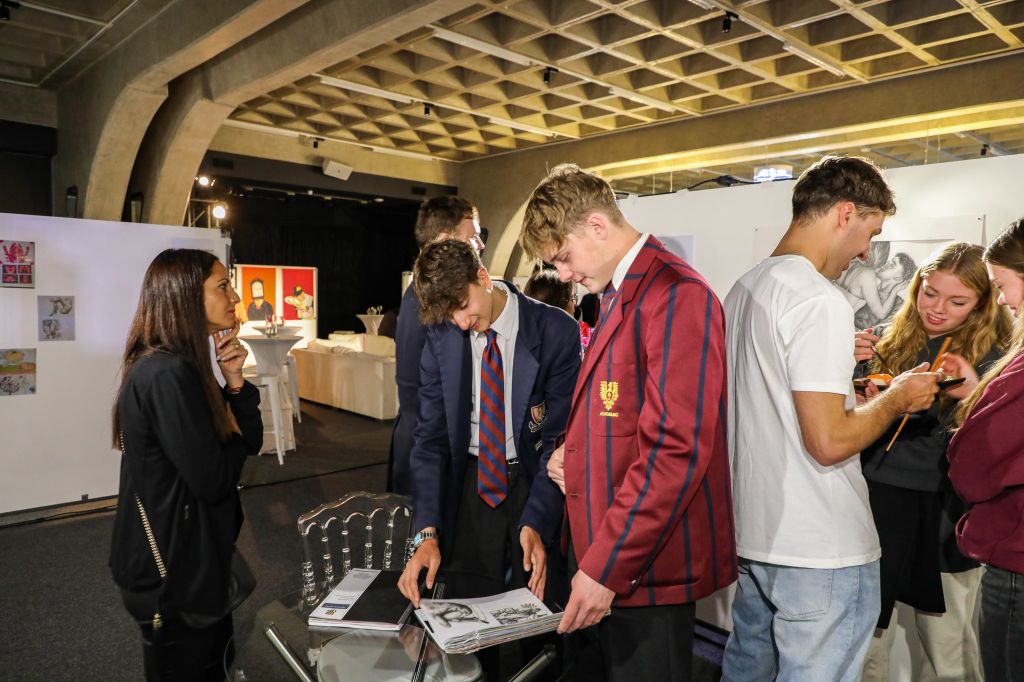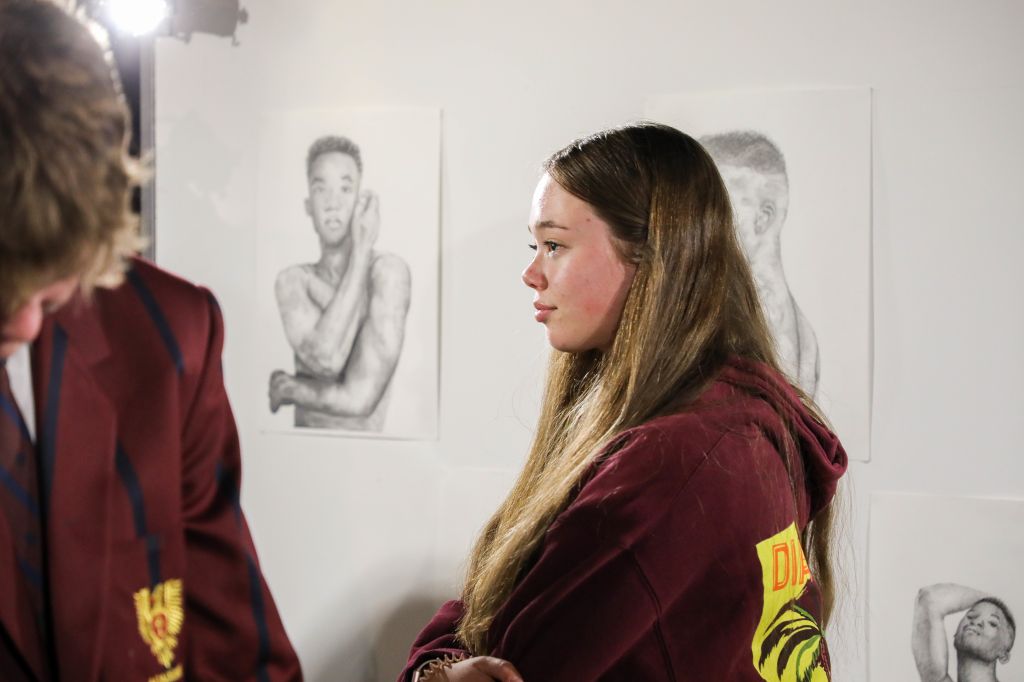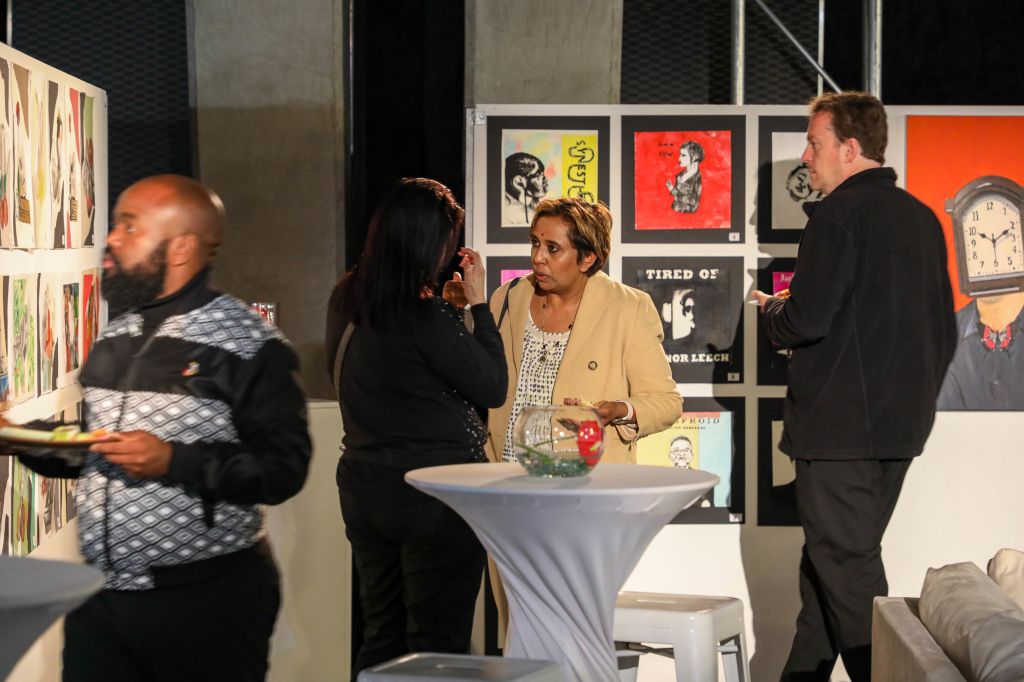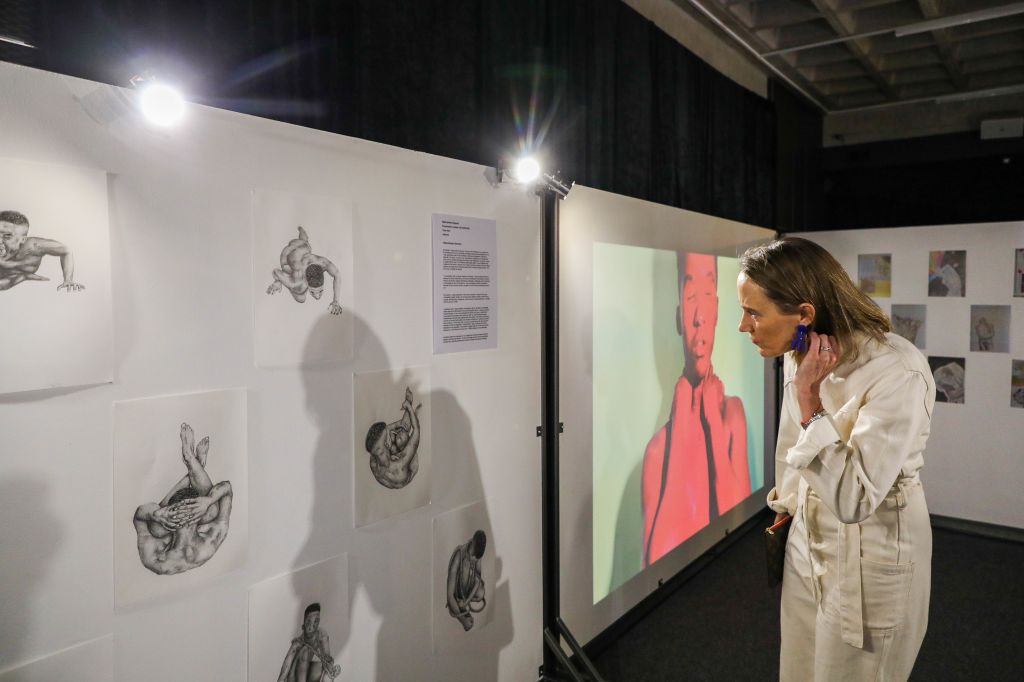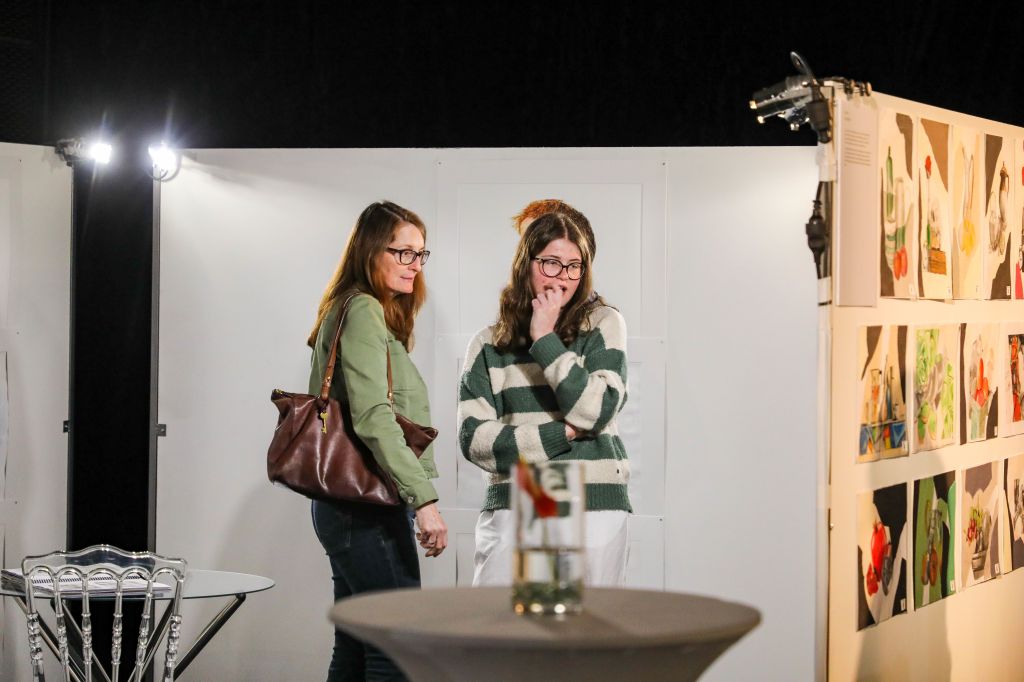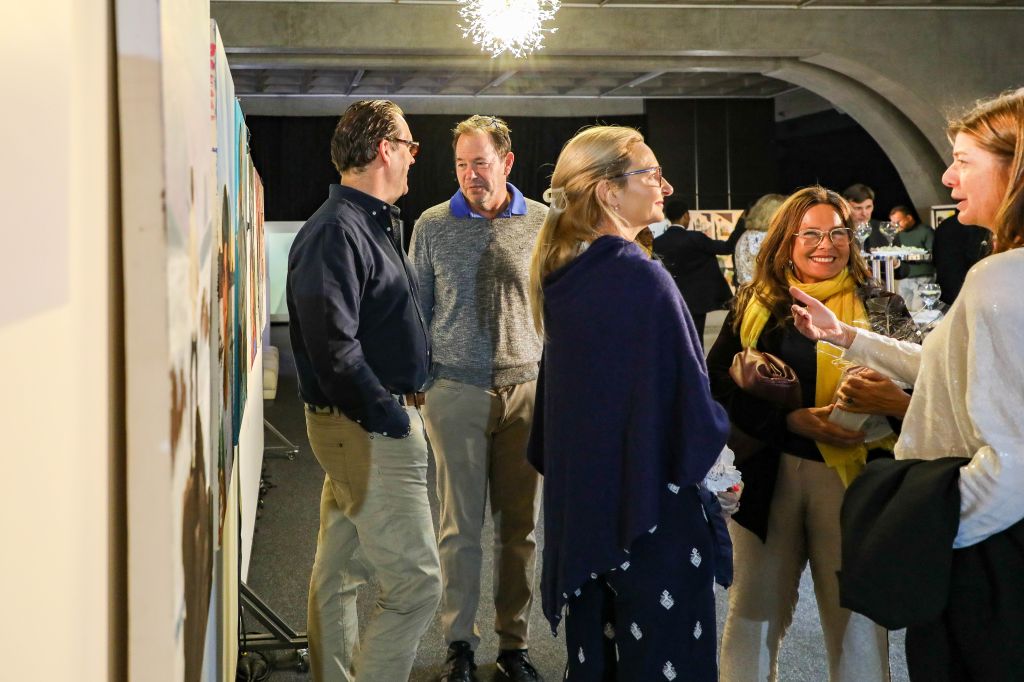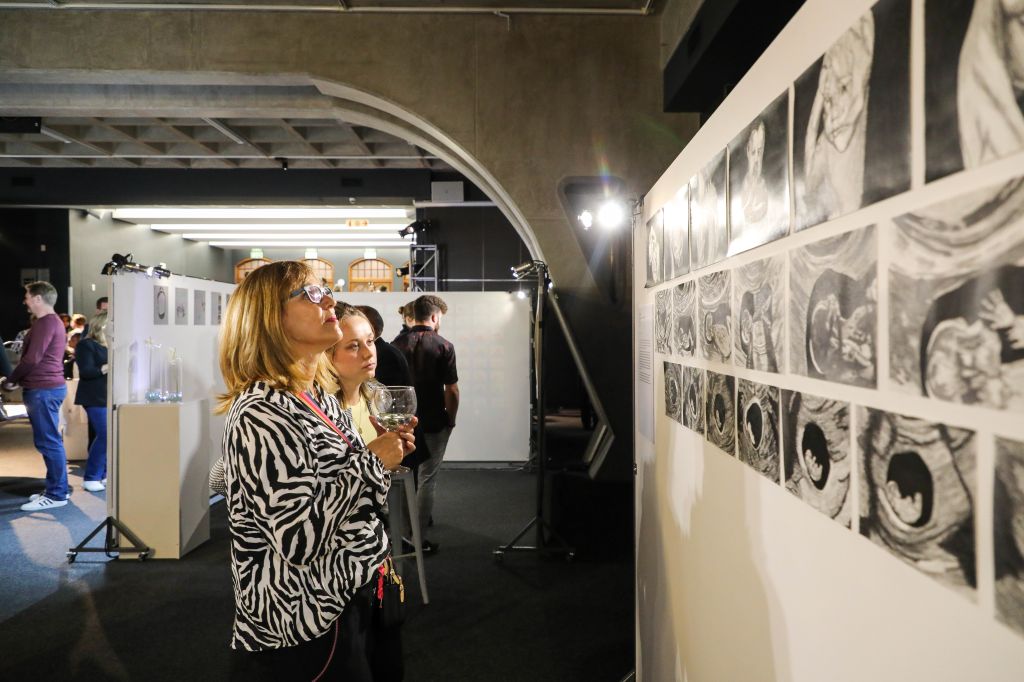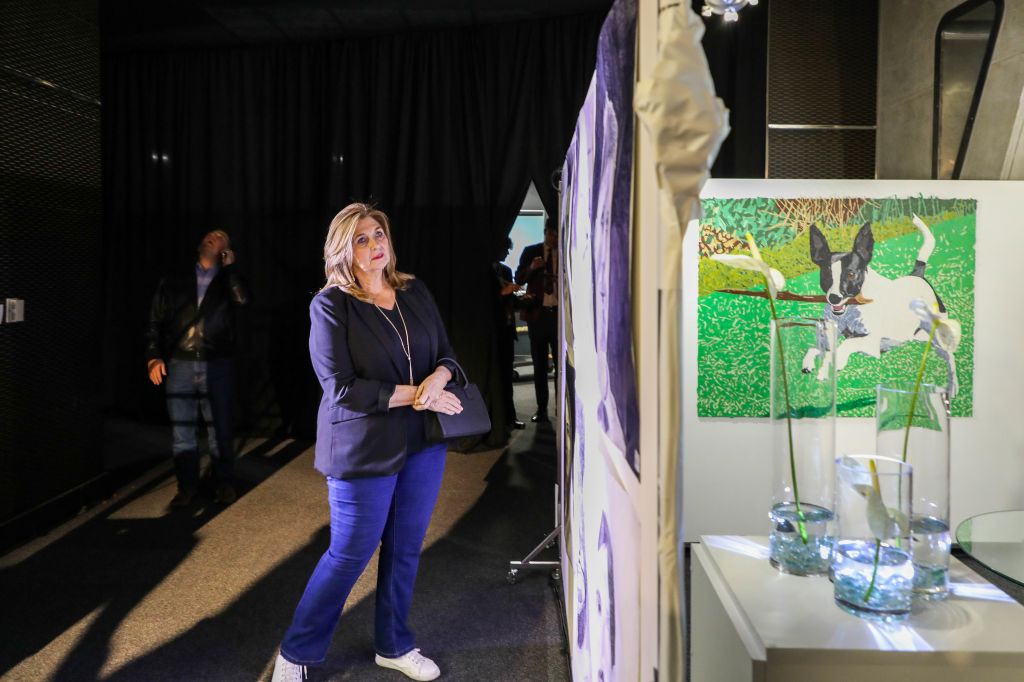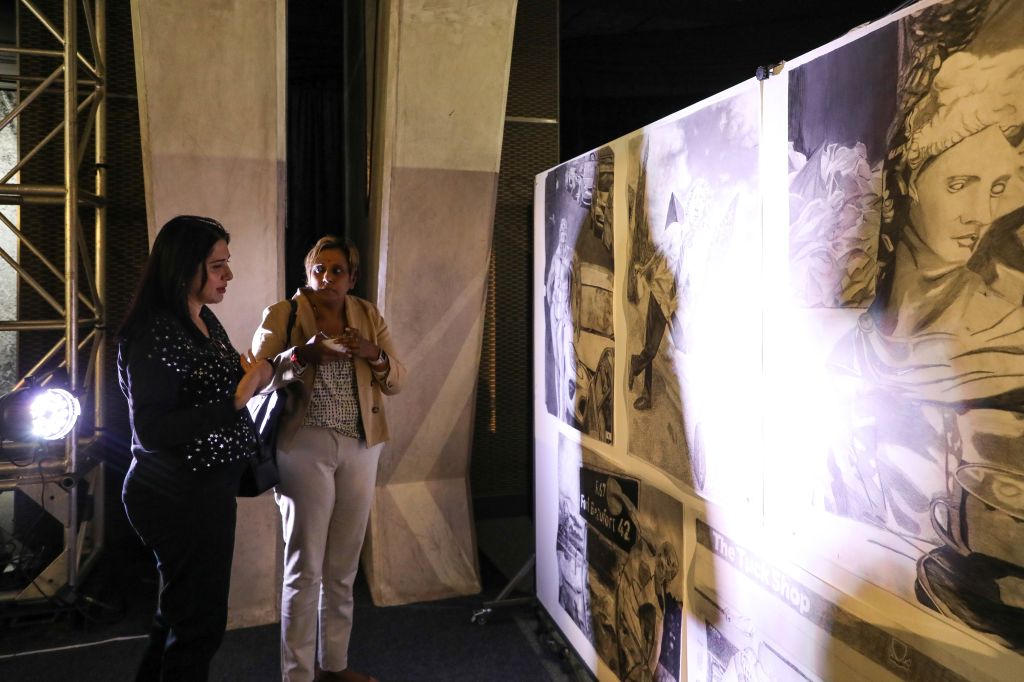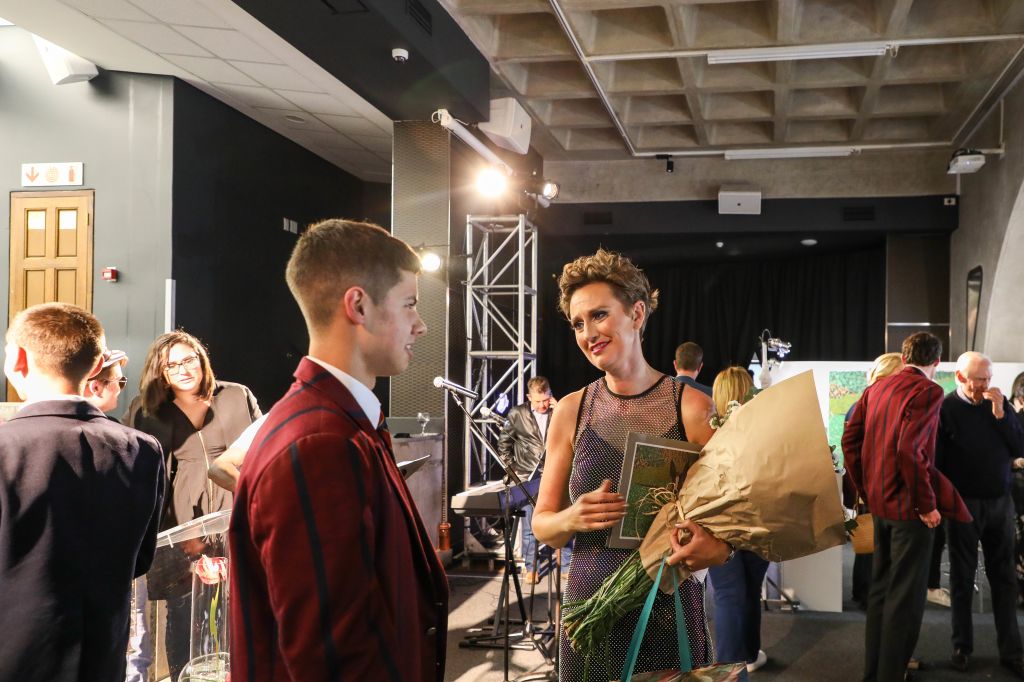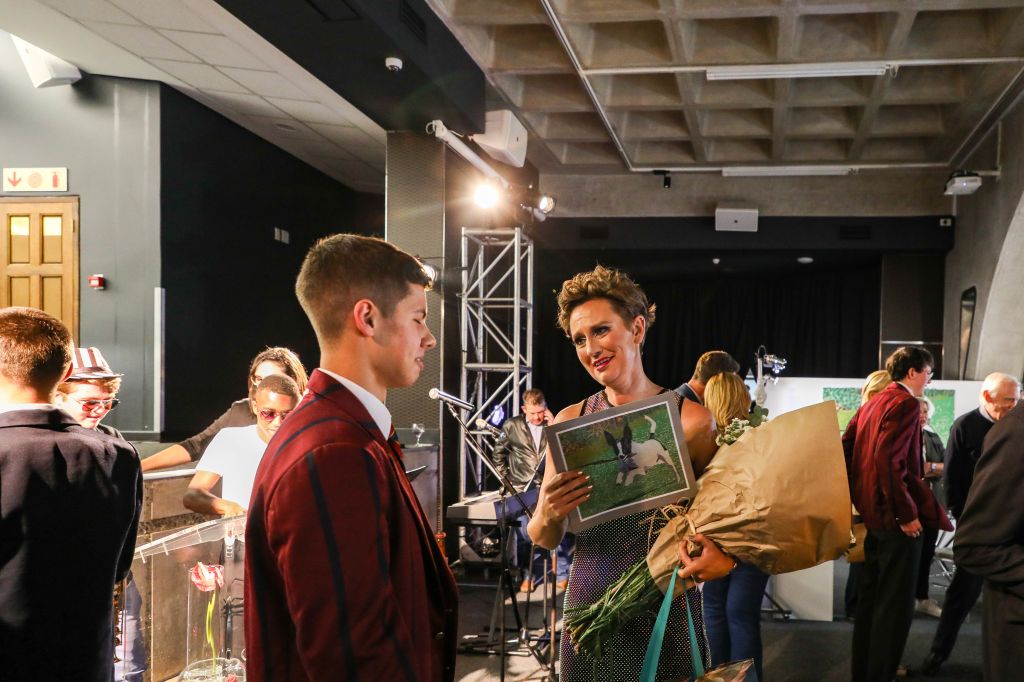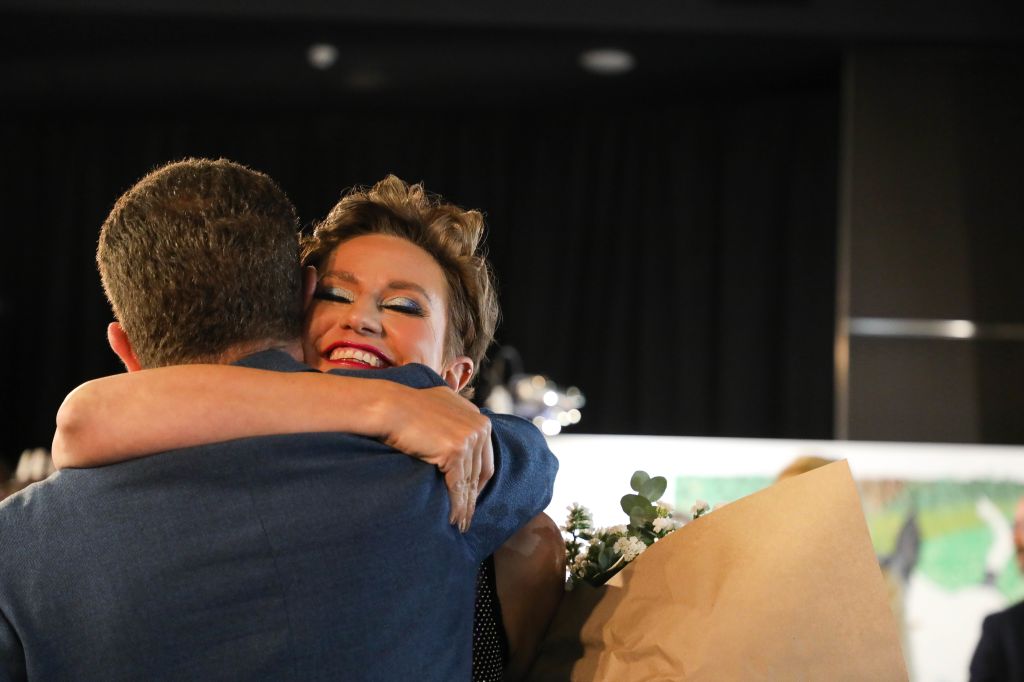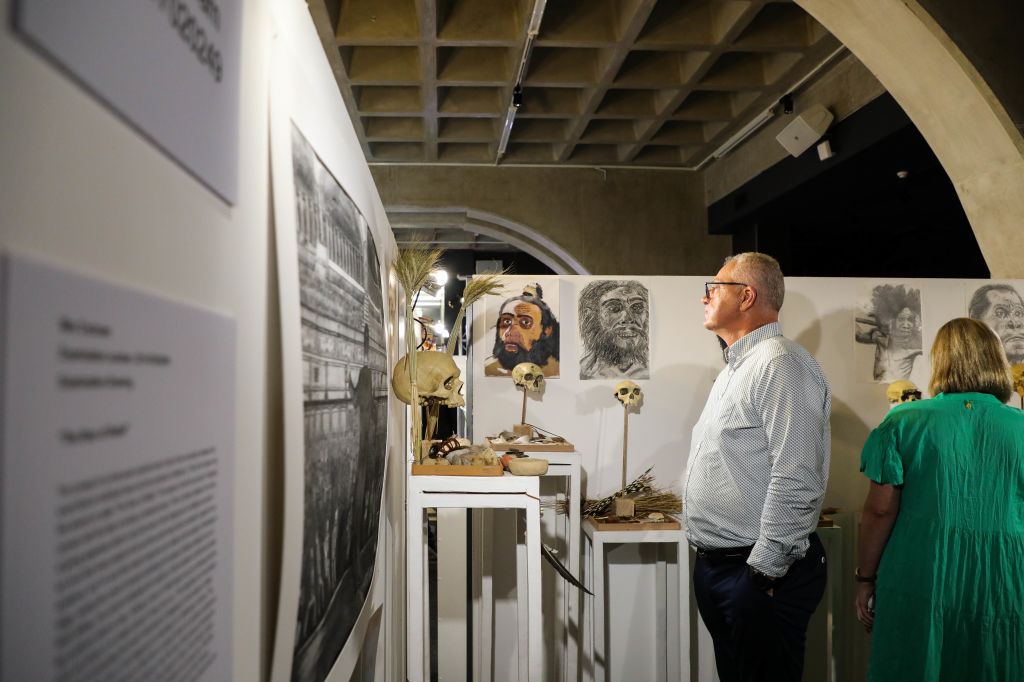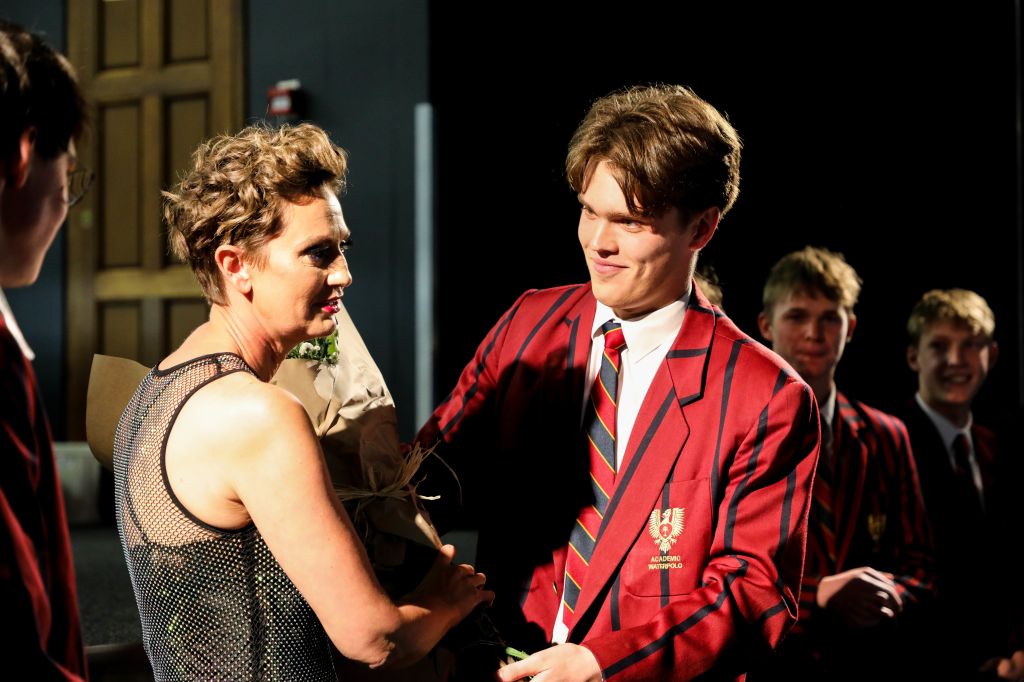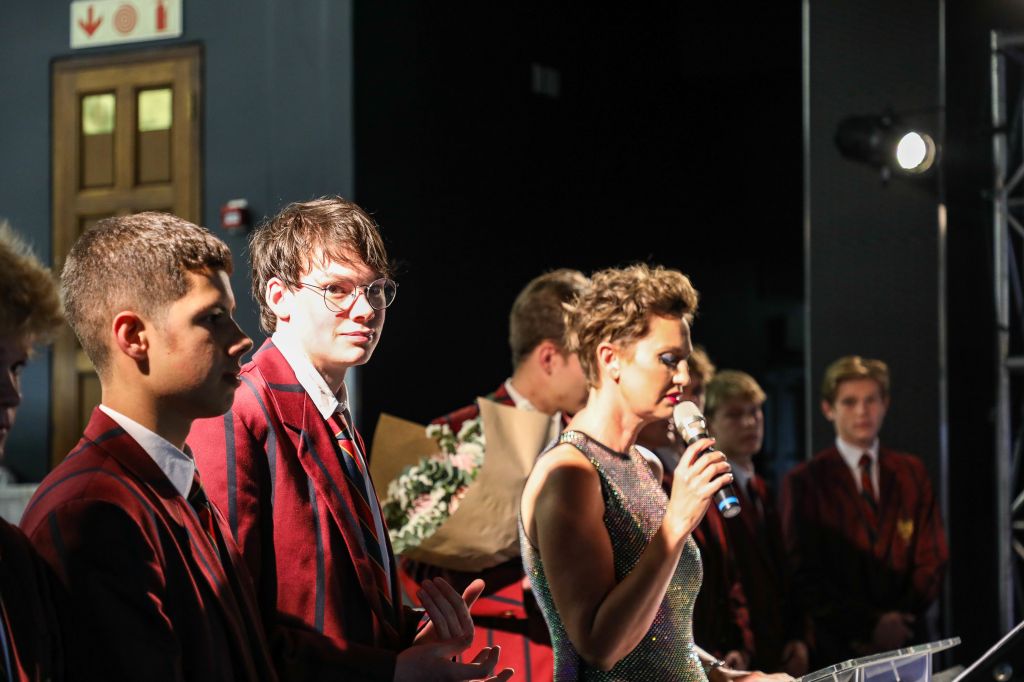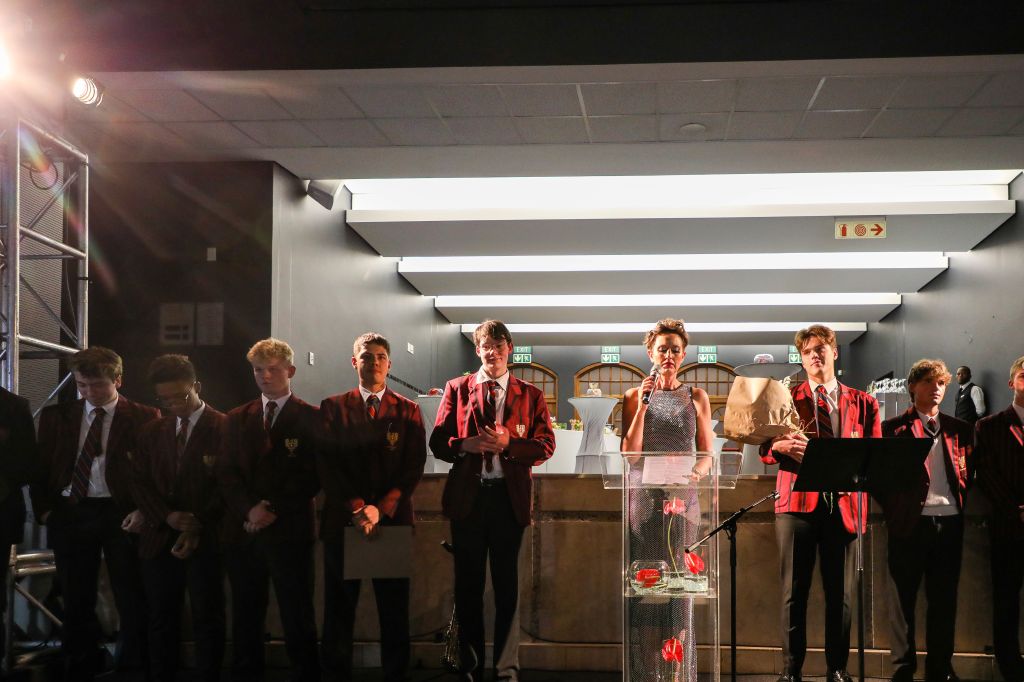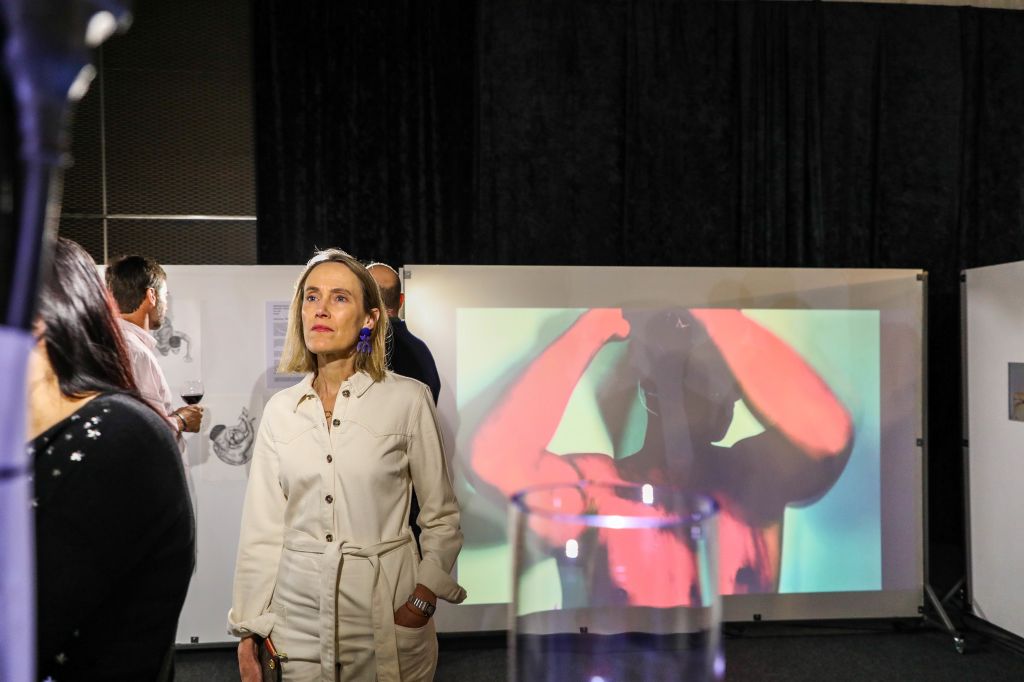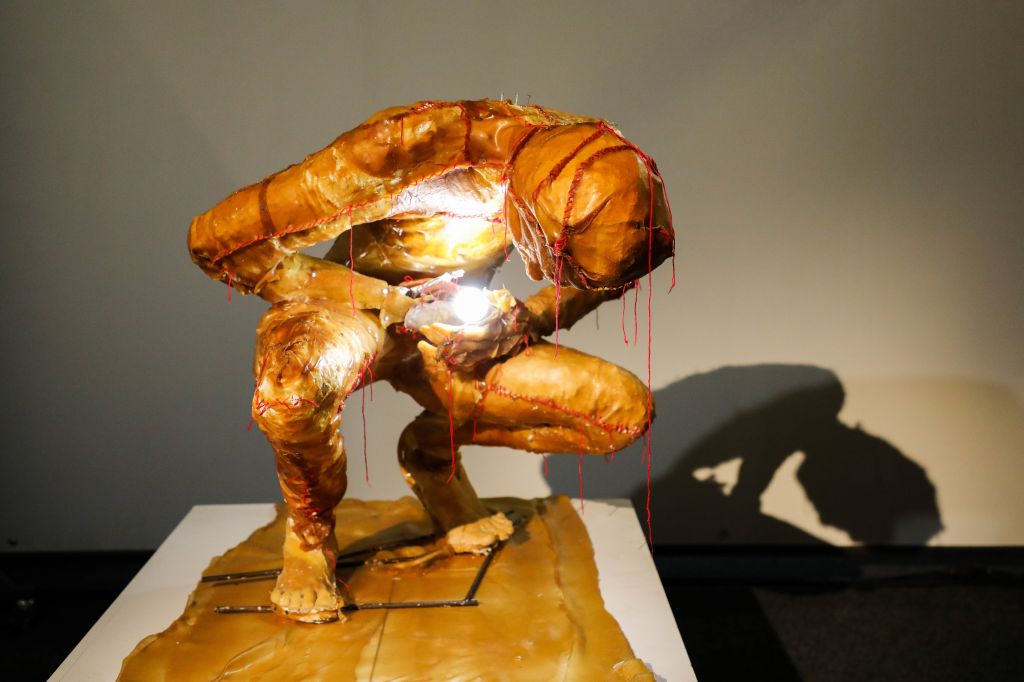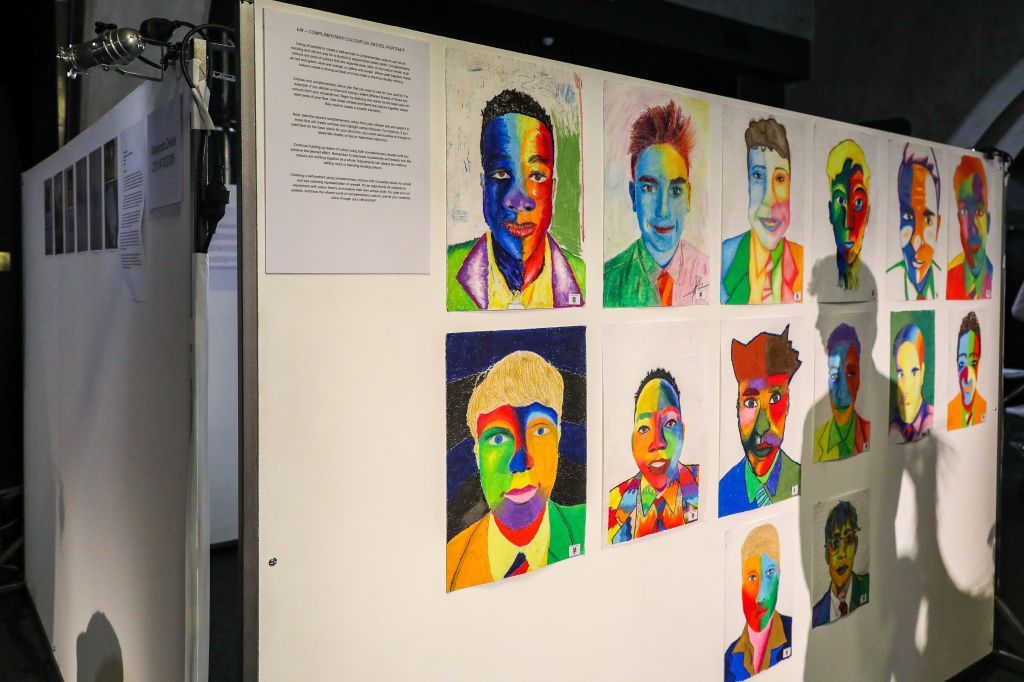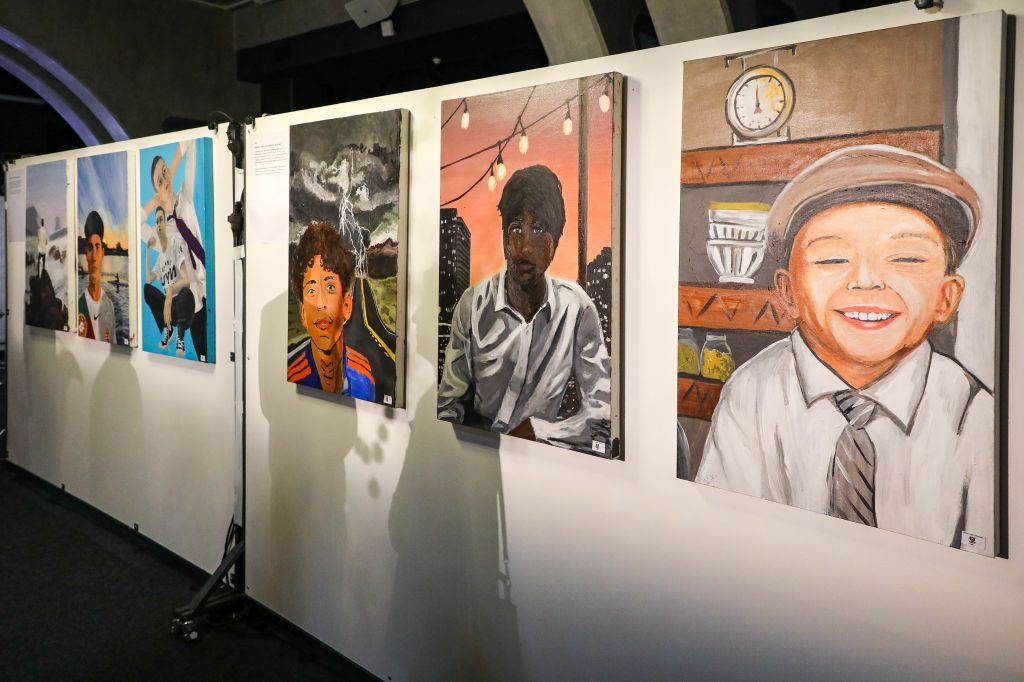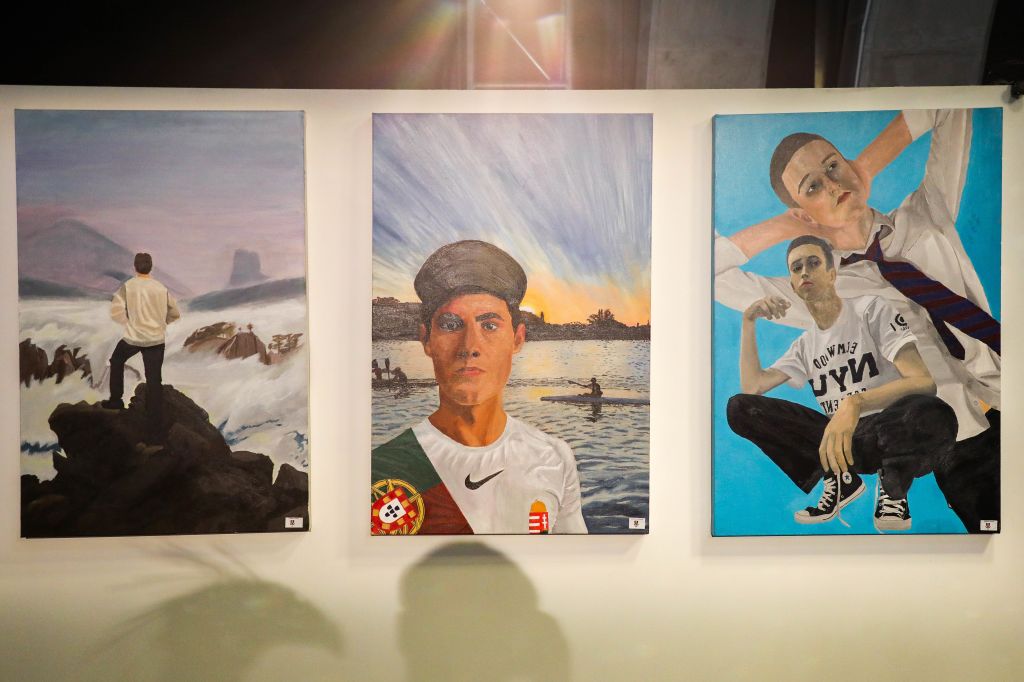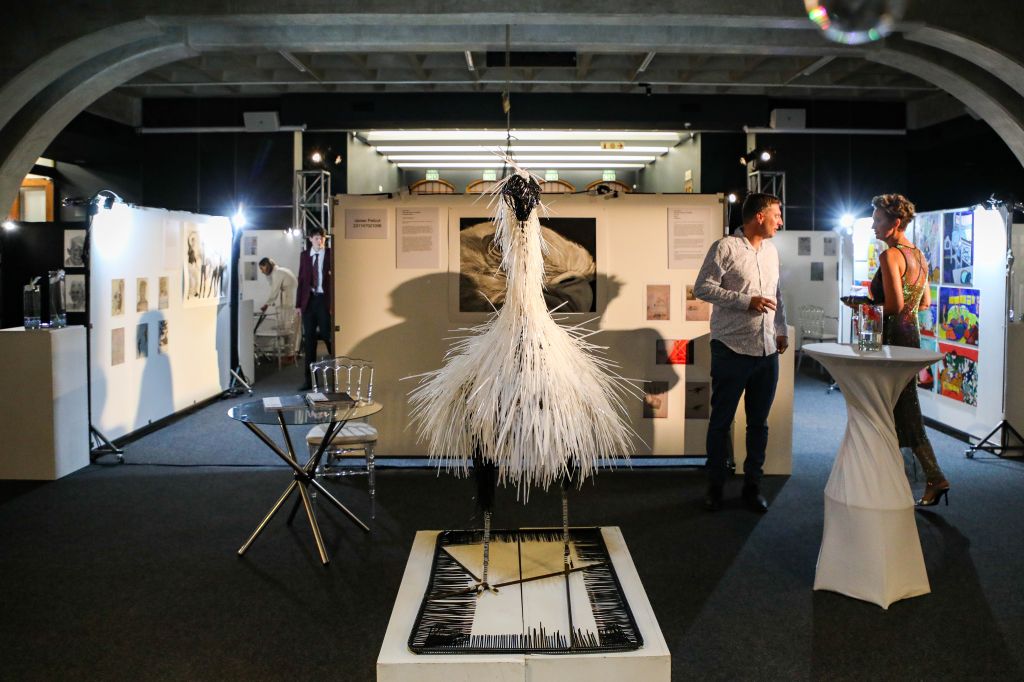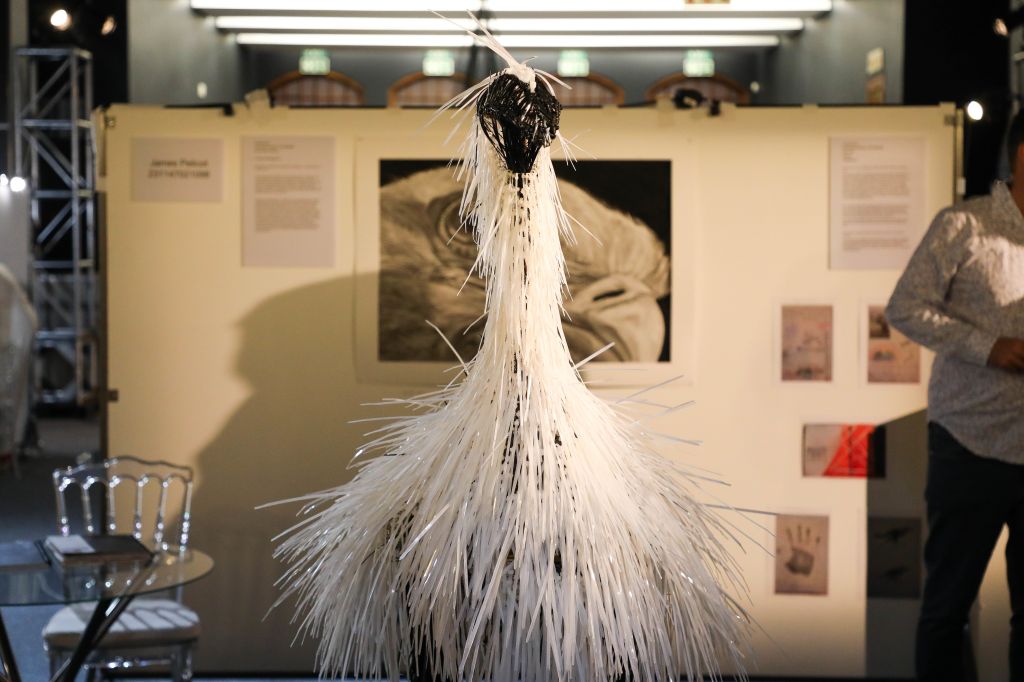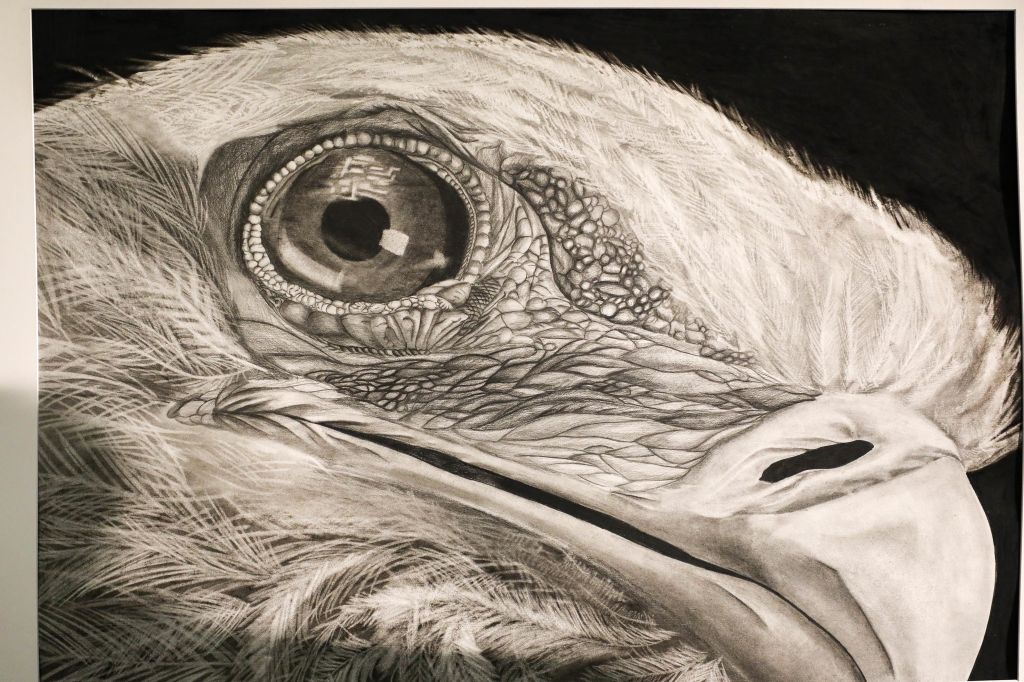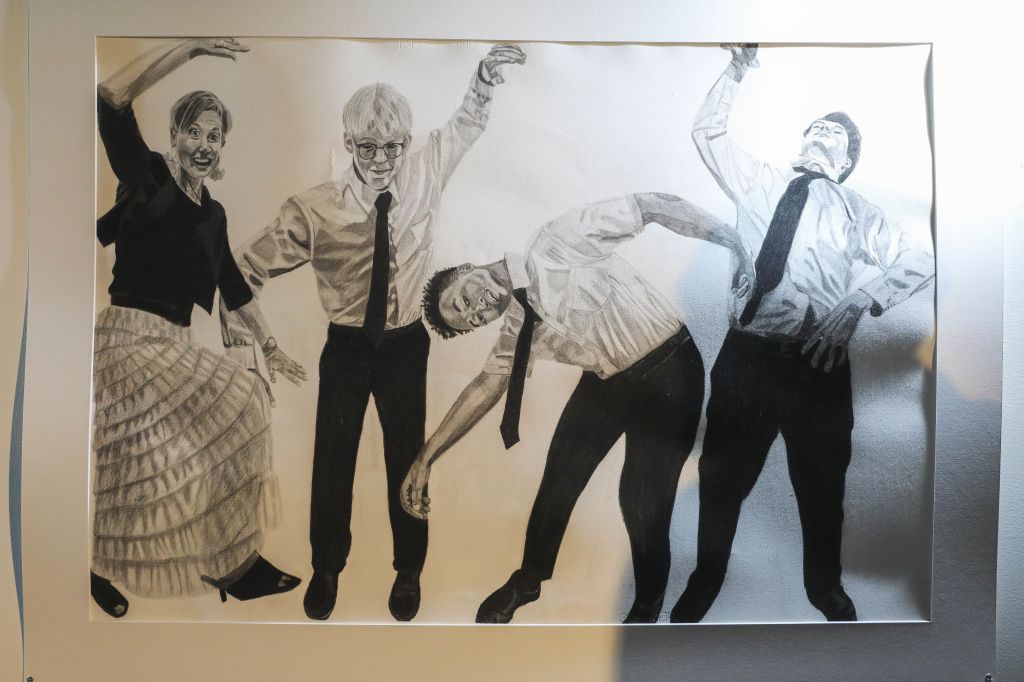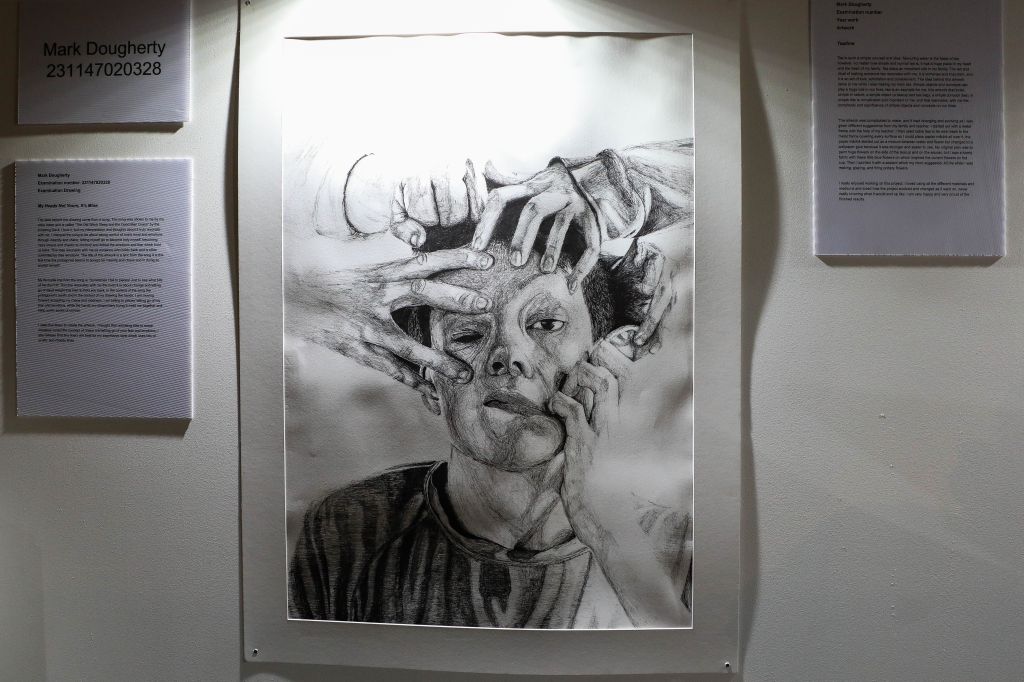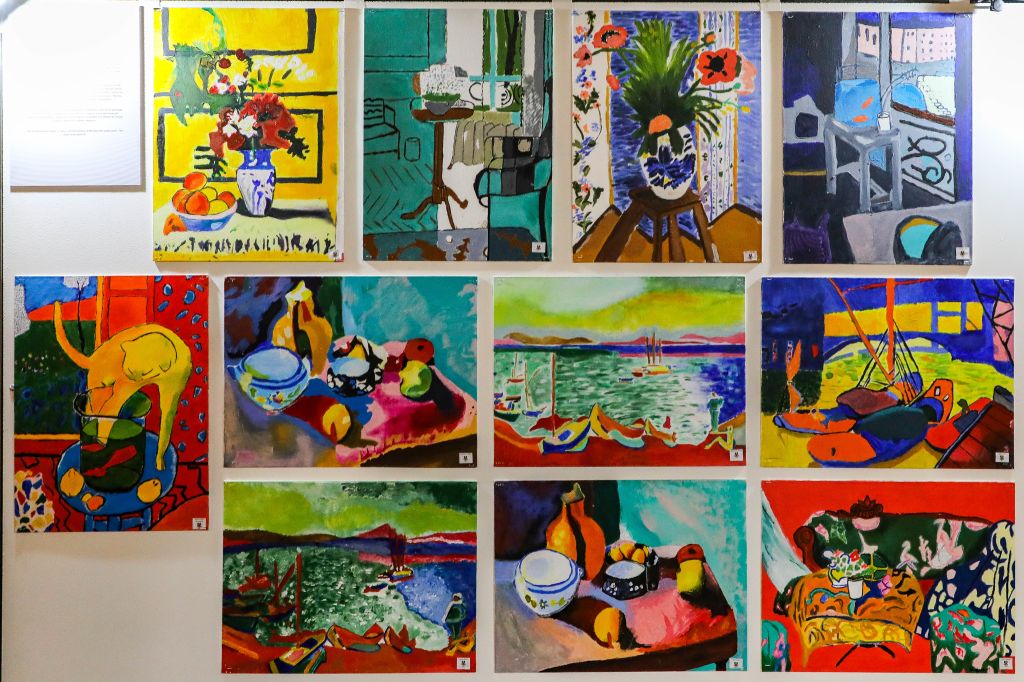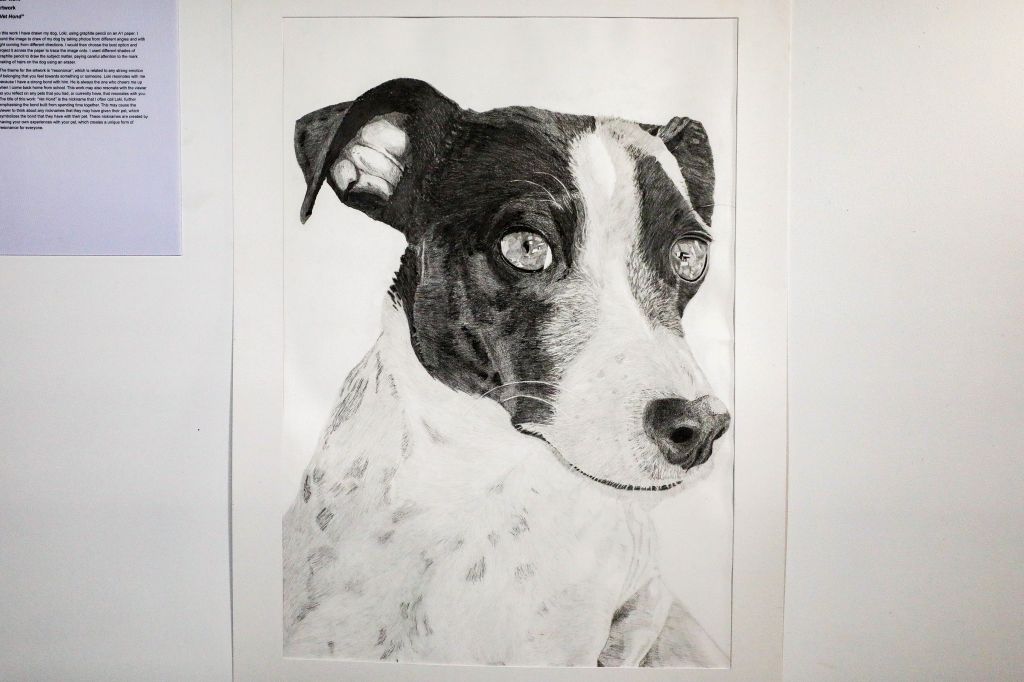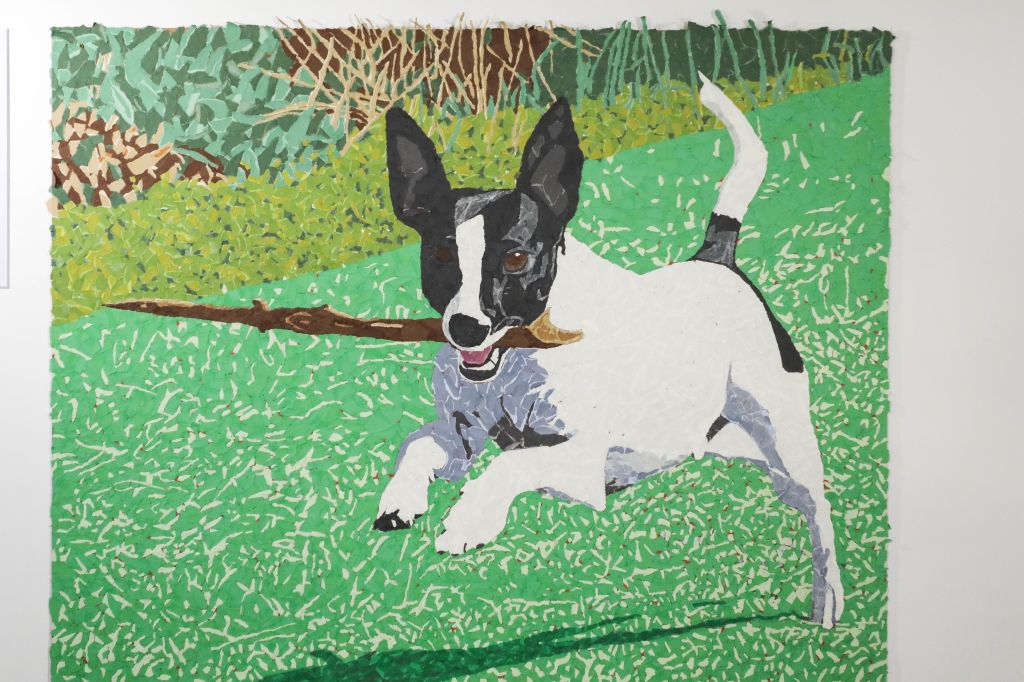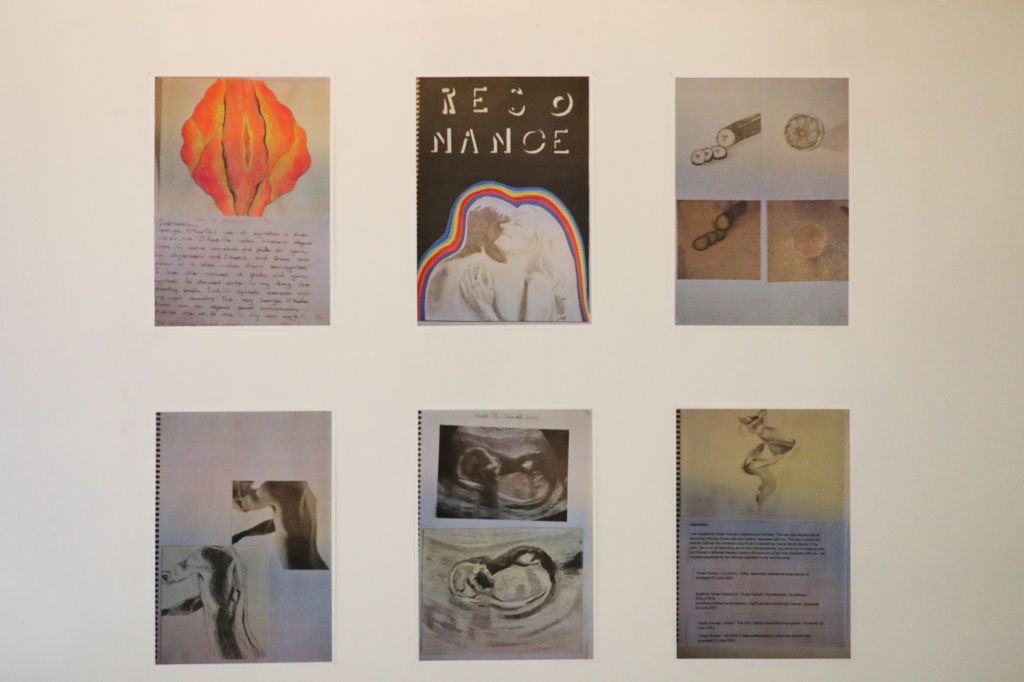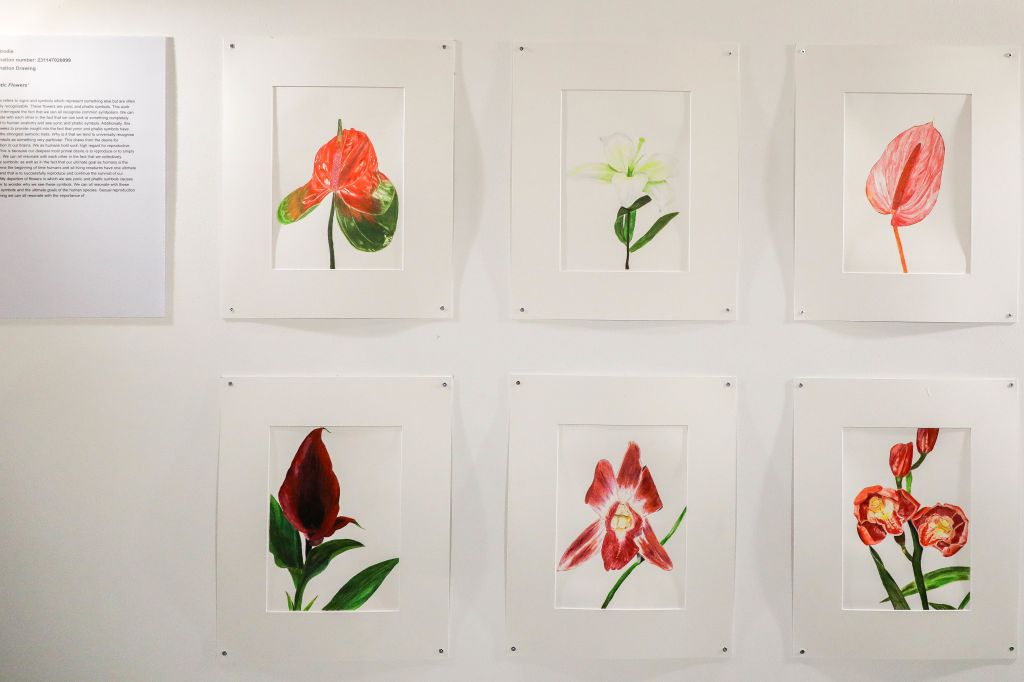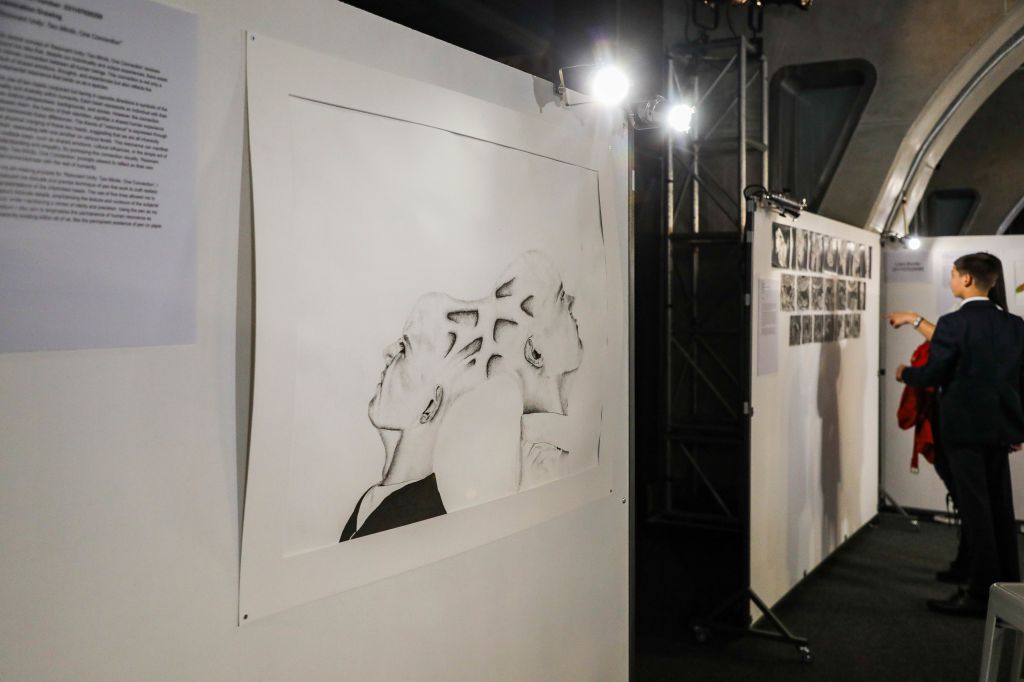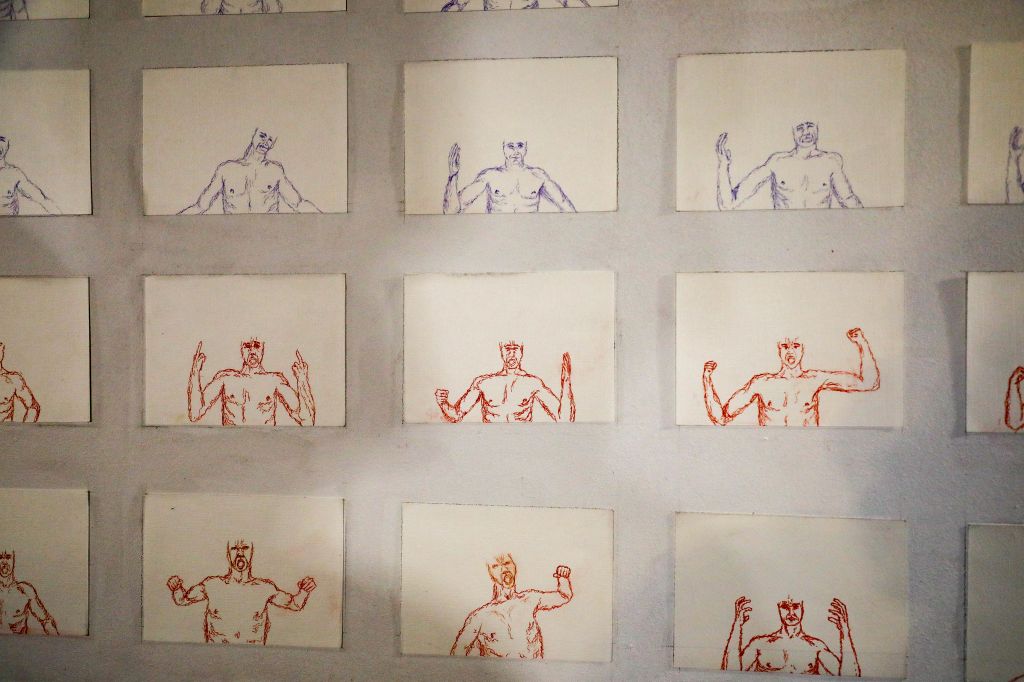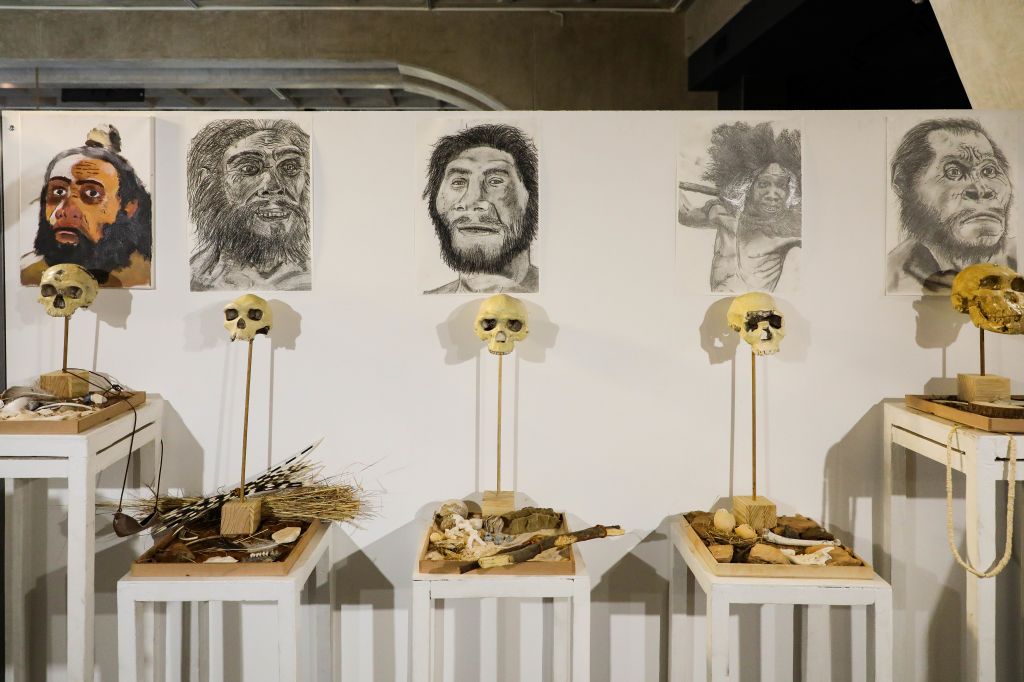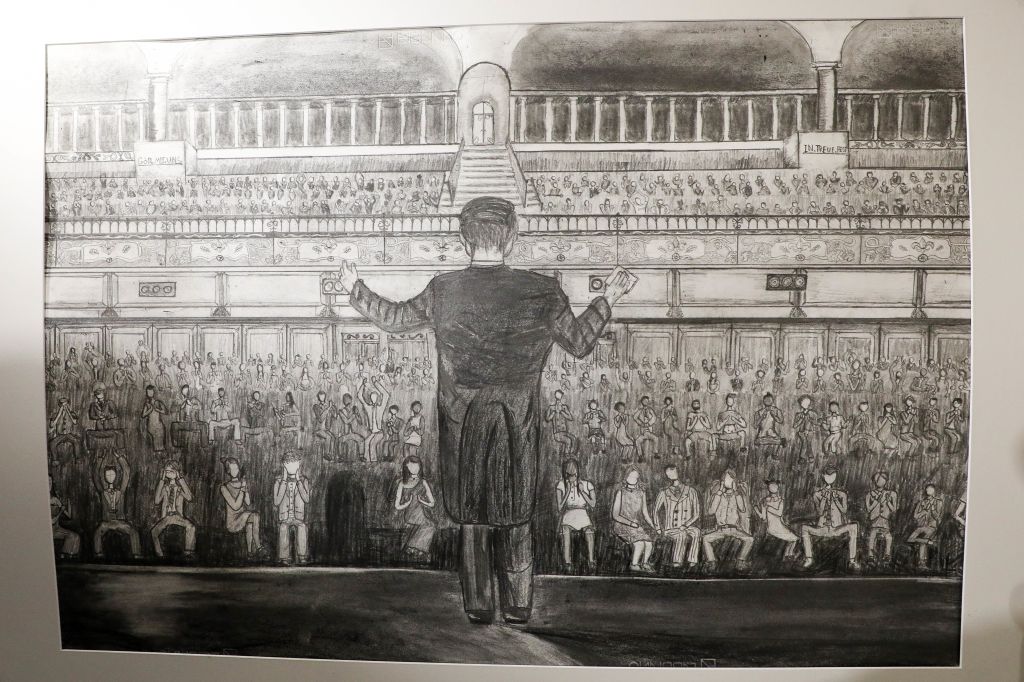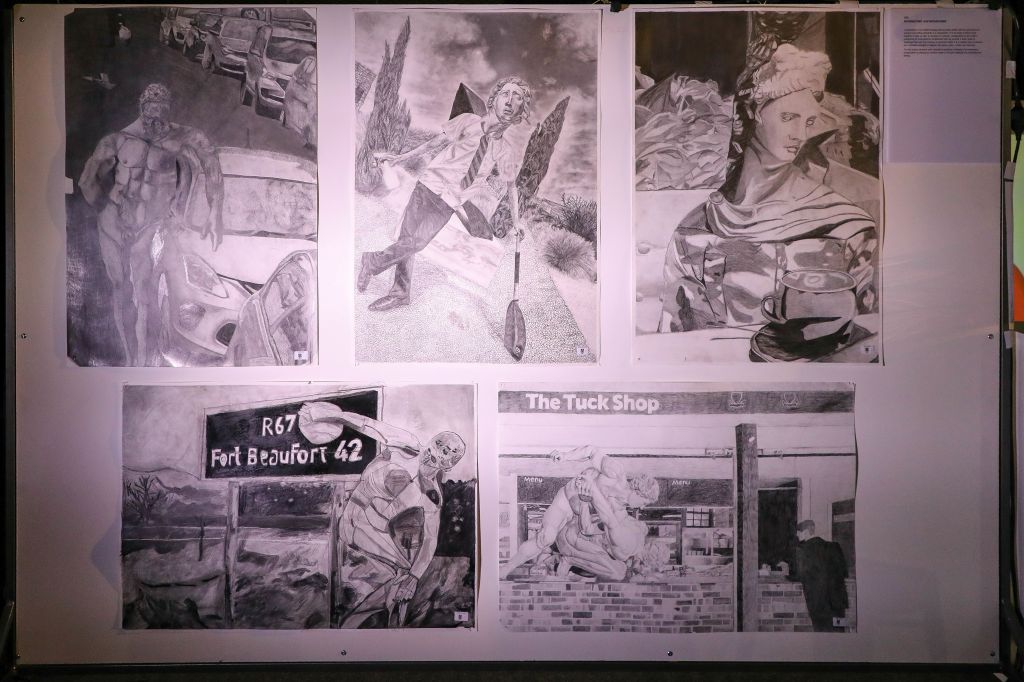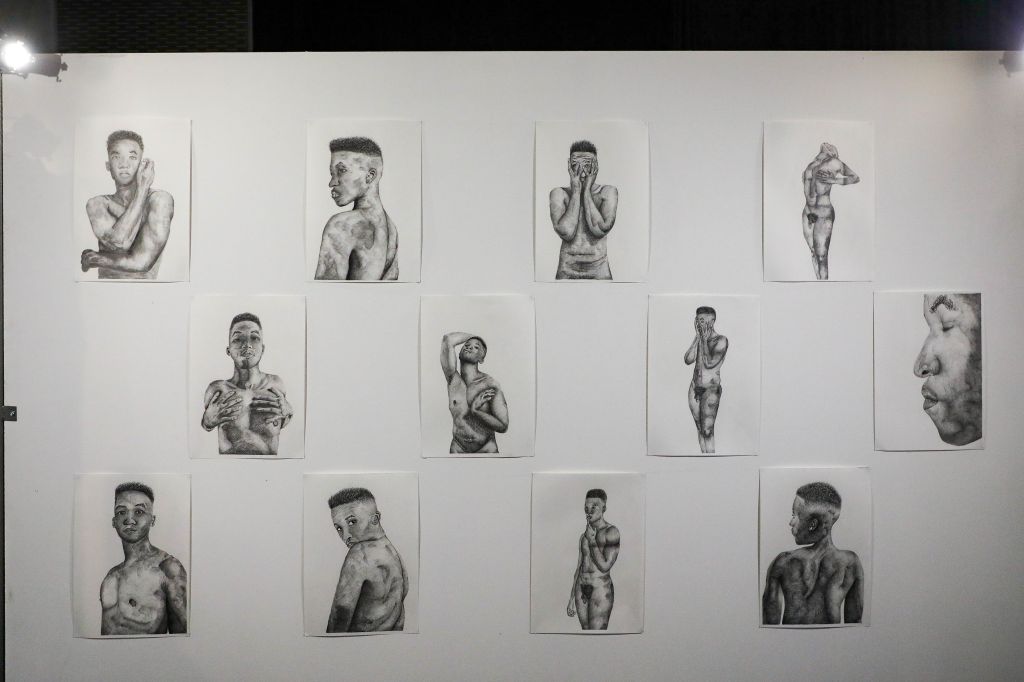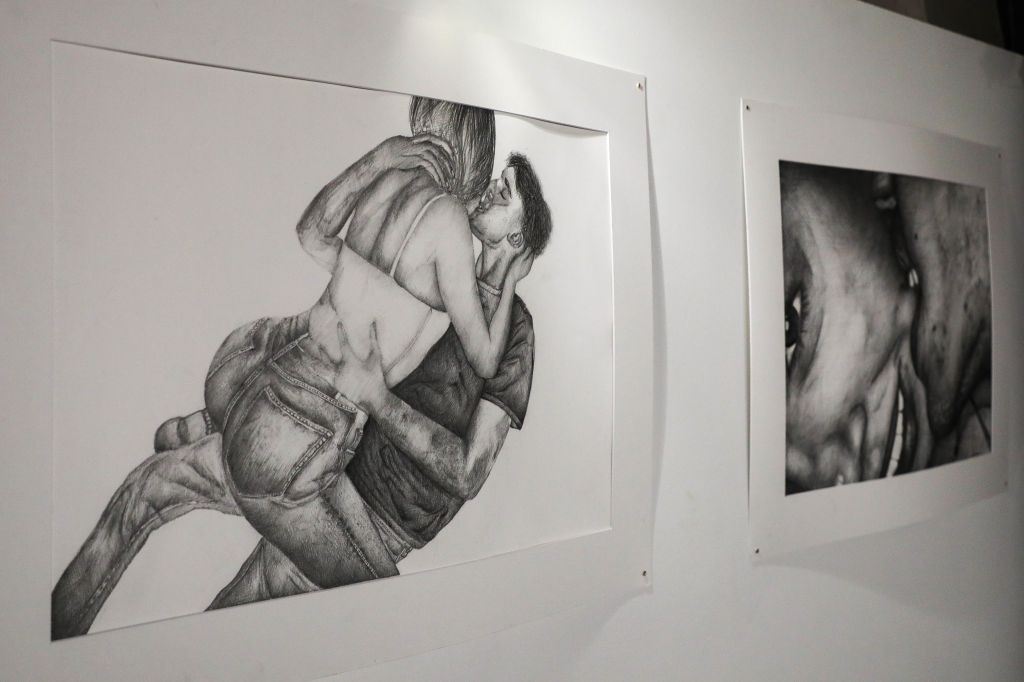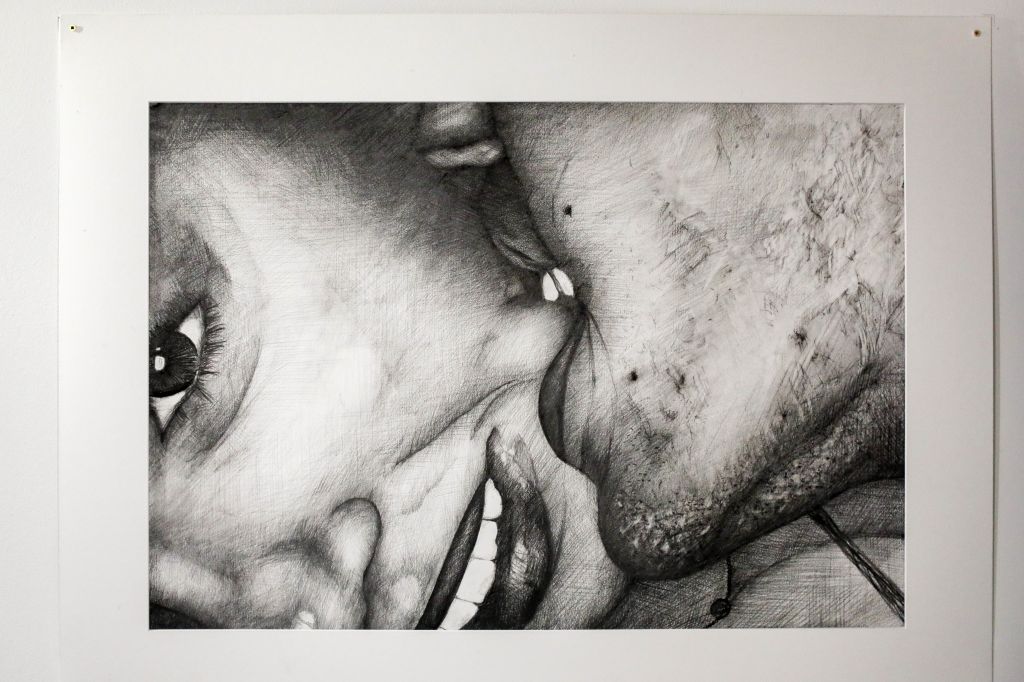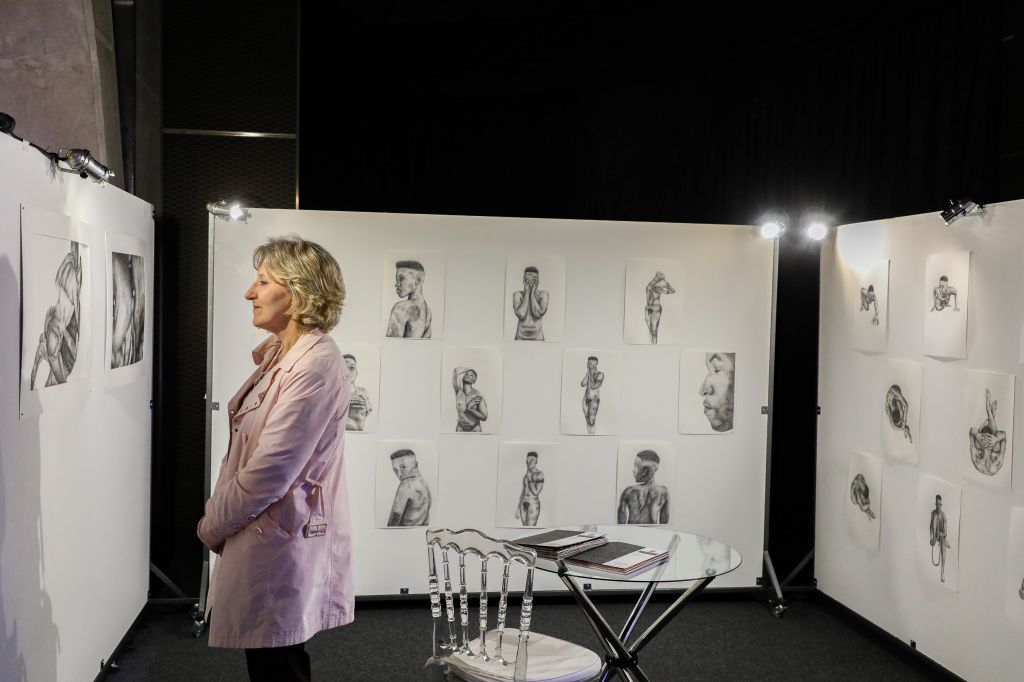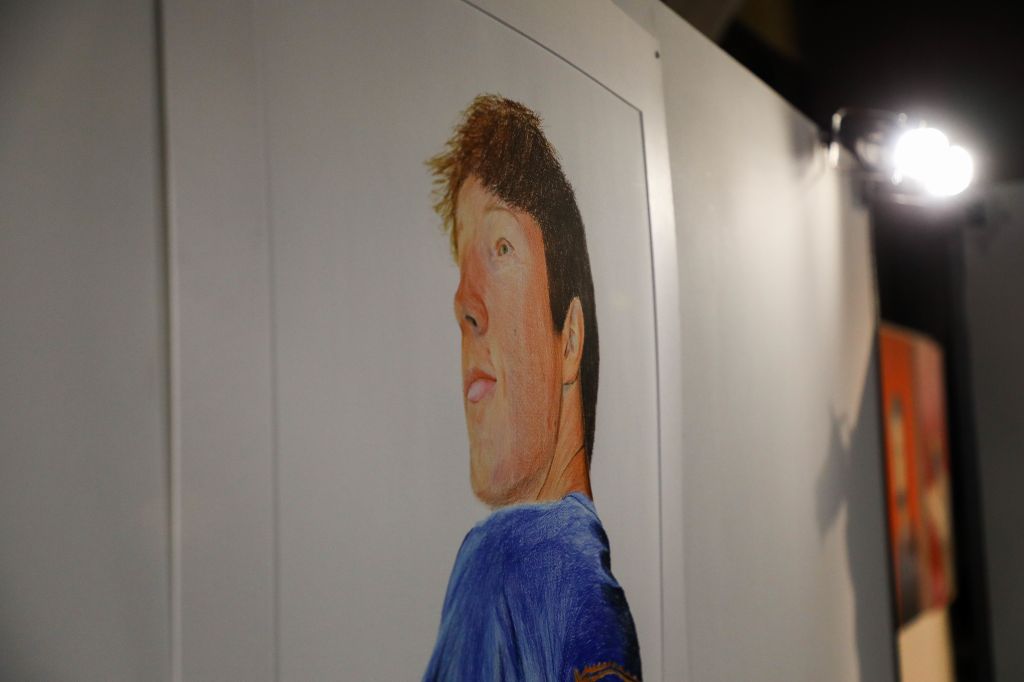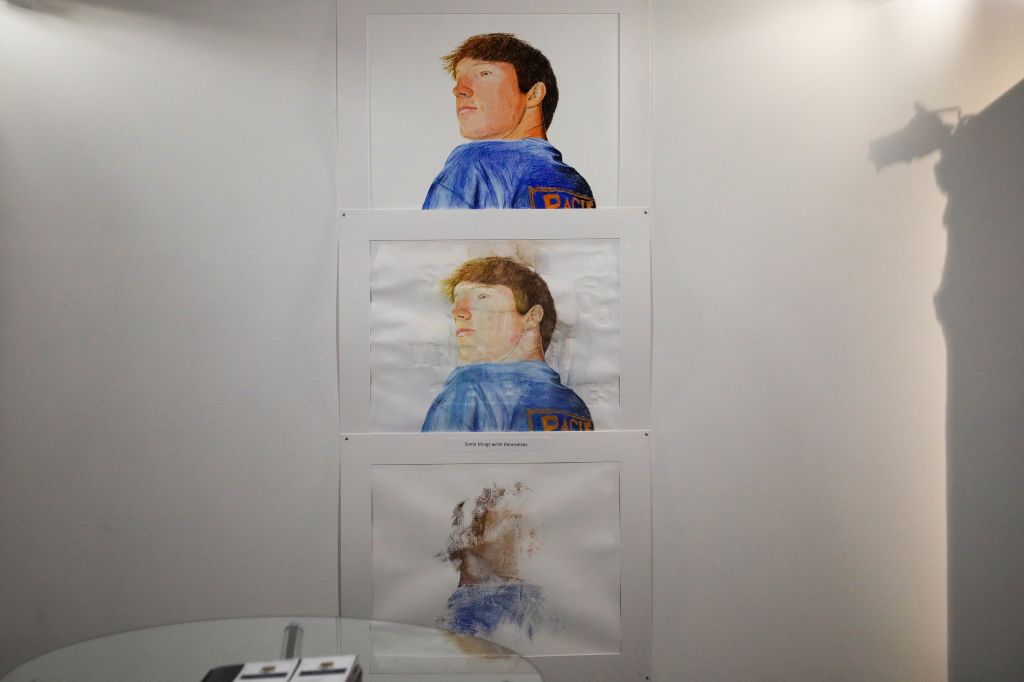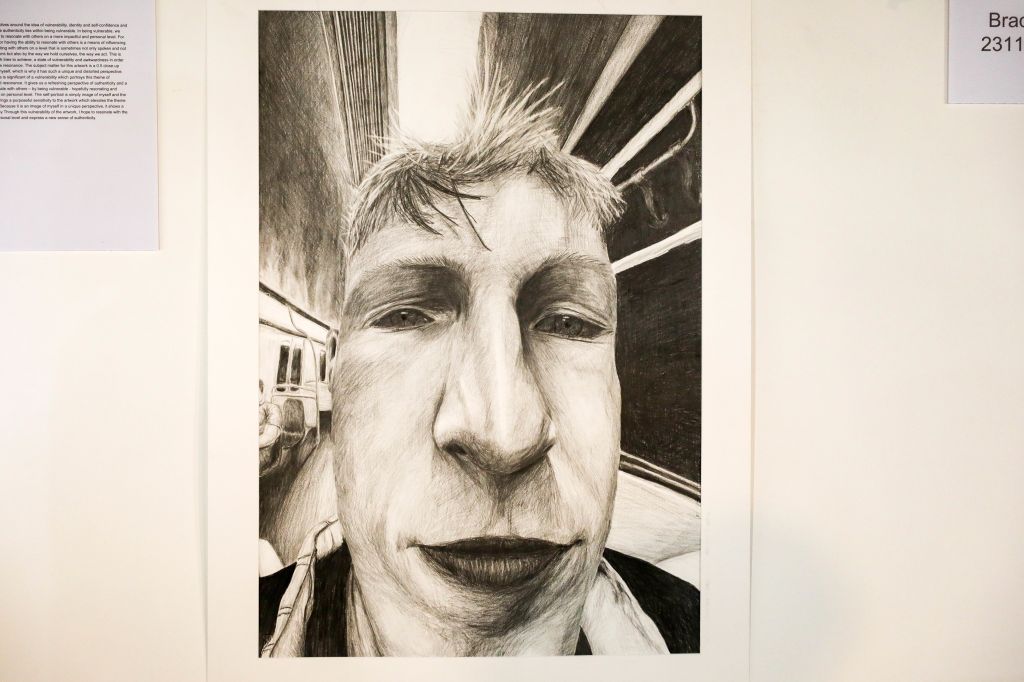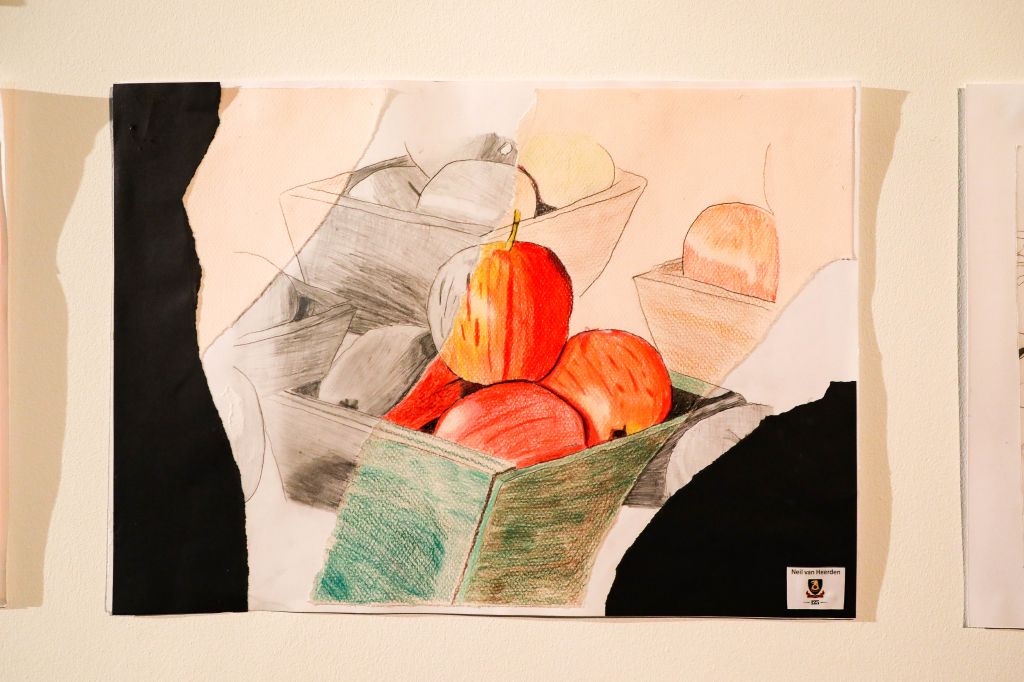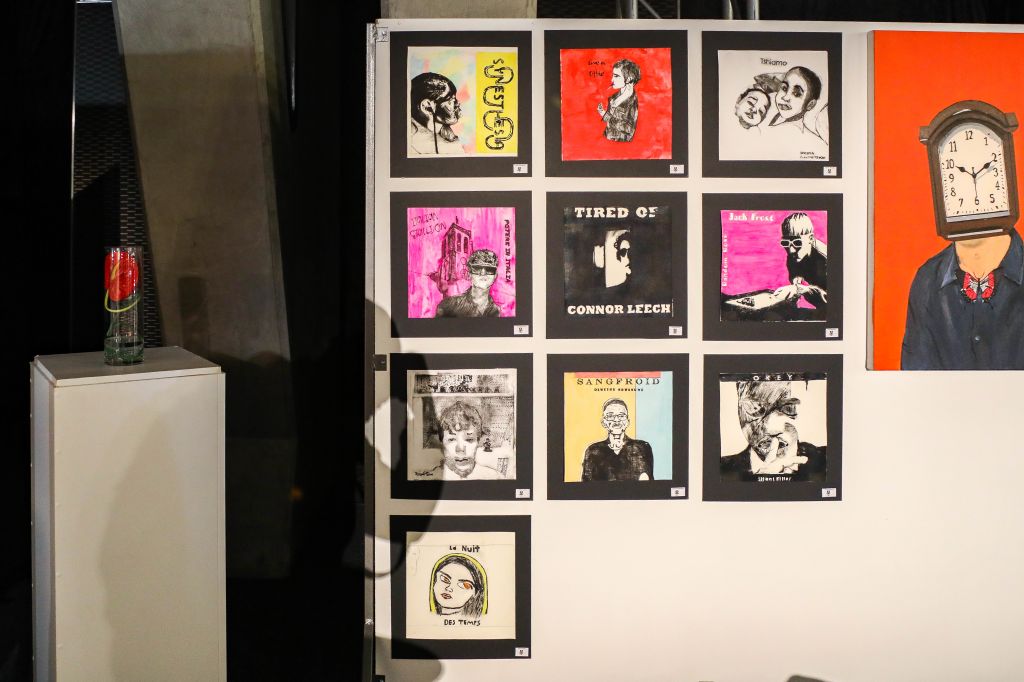The annual College Art Exhibition sparkled with elegance on Monday, 16 October, as our community gathered in the Rene England Auditorium for a delightful evening of cocktails and canapes and to view the exceptional work of our College students.
The highlight of the evening was the magnificent display of the matric final submissions, showcasing the extraordinary talent of our students as they explored the theme of Resonance.
We are incredibly proud of our students who poured their hearts and souls into their work, and we do not doubt that they will excel in their final examinations.
It was also a bittersweet moment marked by a touching goodbye from Ms Estelle Potgieter, Head of Visual Arts, who has nurtured these young talents throughout their journey.
“A fundamental aspect of visual art that often goes unnoticed but holds immense significance - is resonance. Resonance in visual art refers to the ability of an artwork to evoke emotions, thoughts, or memories within its viewers. It is the power of a piece to strike a chord deep within us, creating a lasting impact that transcends time and space.
Resonance transforms a mere collection of colours, lines, and shapes into a masterpiece that speaks directly to our souls. Art becomes a universal language through resonance, capable of connecting people from different backgrounds, cultures, and experiences. When we encounter a resonant artwork, we remember our shared humanity and the common threads that bind us.
Allow me to share with you three insightful quotes by famous artists who have recognised the importance of resonance in their work:
Firstly, Vincent van Gogh once said: "I am seeking. I am striving. I am in it with all my heart." Van Gogh understood that true resonance could only be achieved when an artist poured their heart and soul into their creation. This genuine passion and dedication allows the artwork to resonate deeply with others.
Secondly, Pablo Picasso remarked: "Art washes away from the soul the dust of everyday life." Picasso recognised the transformative power of art in providing solace and escape from the mundane aspects of our lives. Resonant artworks can transport us to another realm, where we can momentarily detach ourselves from our worries and immerse ourselves in something greater.
Lastly, Georgia O'Keeffe stated: "I found I could say things with colour and shapes that I couldn't say any other way - things I had no words for." O'Keeffe beautifully encapsulates how resonance enables artists to communicate beyond words.
Through their chosen medium, artists express emotions and ideas that transcend the limitations of language, allowing viewers to connect on a deeper level.
Now, let us delve into the topic of inclusion regarding resonance. Resonance in visual art should not be limited to a select few or cater exclusively to certain groups. It is crucial that resonance is inclusive and accessible to all individuals, regardless of background, abilities, or perspectives.
Art has the power to challenge societal norms, break down barriers, and foster understanding. By embracing diverse voices and experiences, we can create resonant artworks that reflect the richness and complexity of our world.
An artist can not fail; it’s a success to be one. No great artist ever sees things as they really are. If he did, he would cease to be an artist. Thank you, my dear students, for seeing things differently.”
- Excerpt from the speech by Ms Estelle Potgieter, Head of Art at the St John’s College Upper V Art Exhibition.

